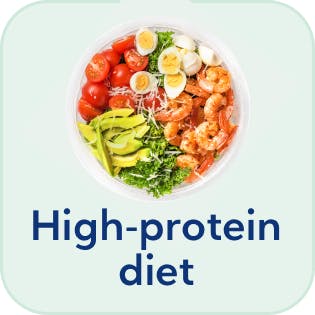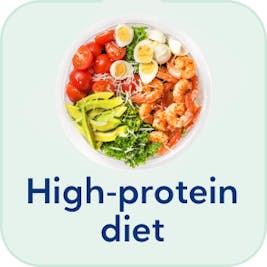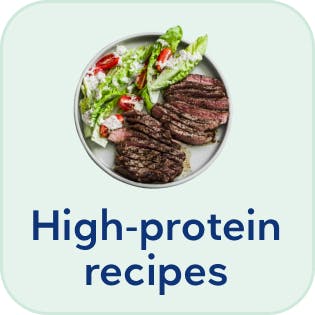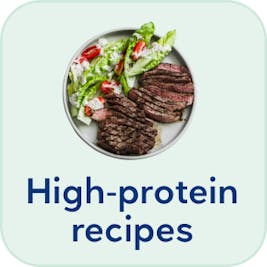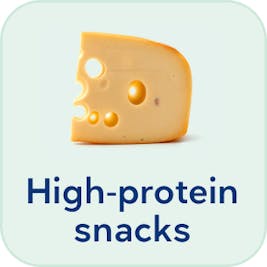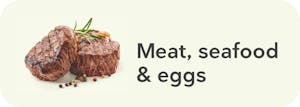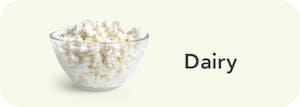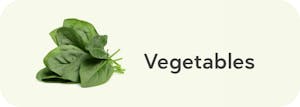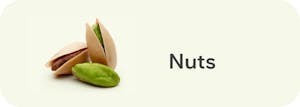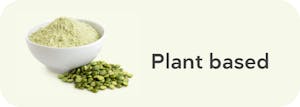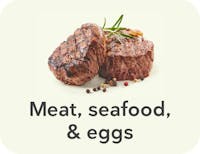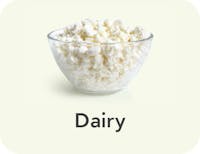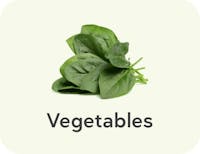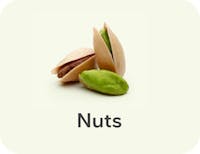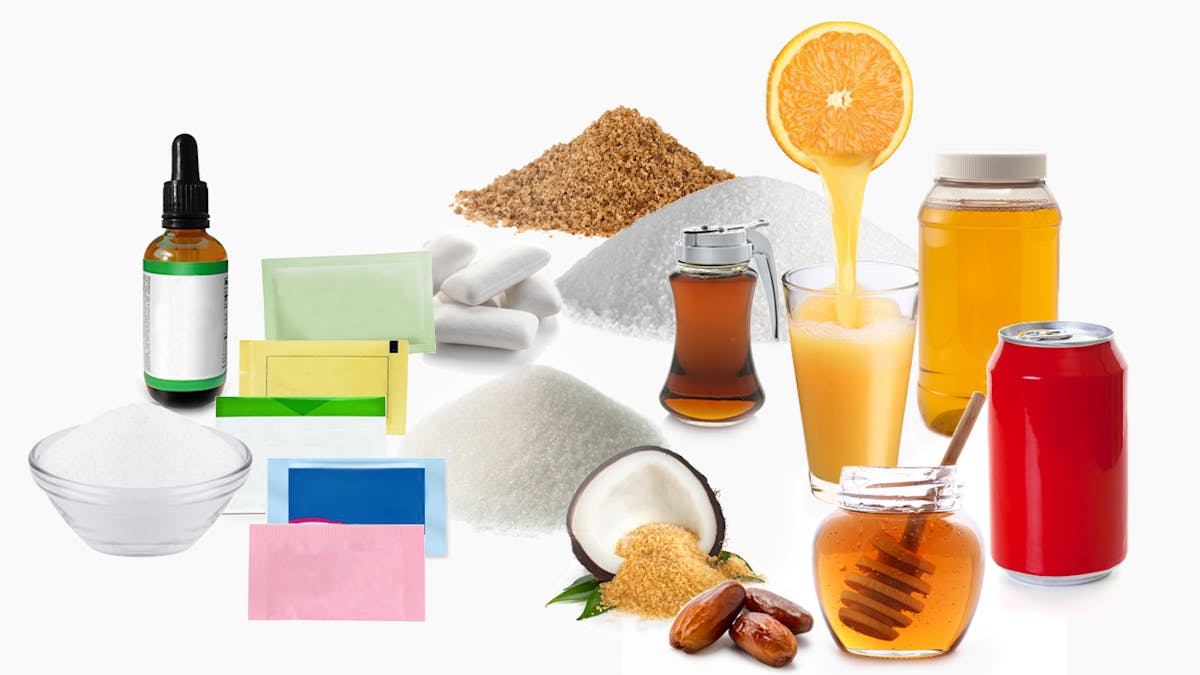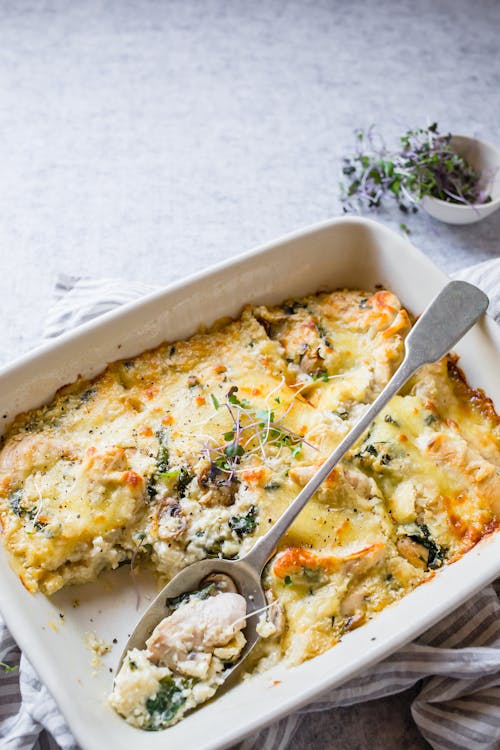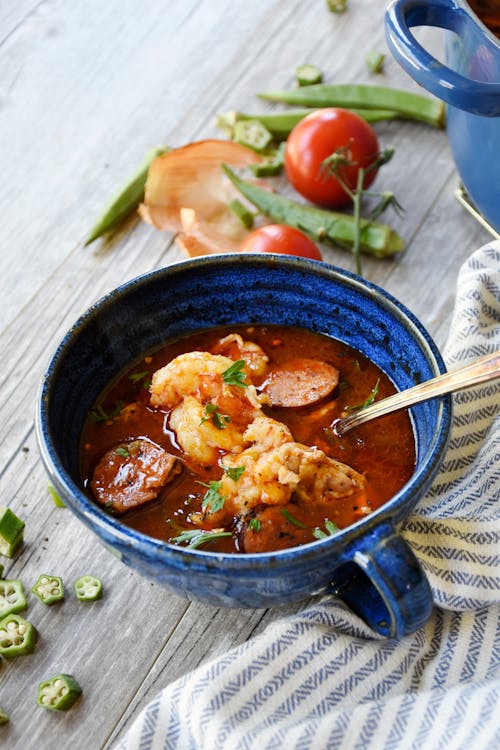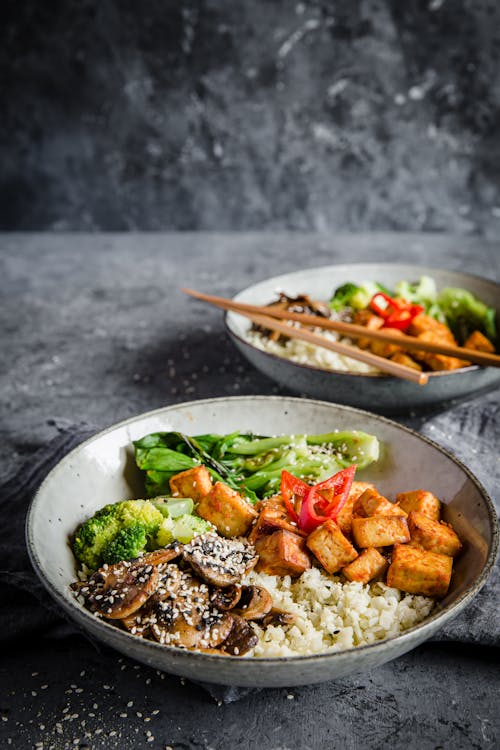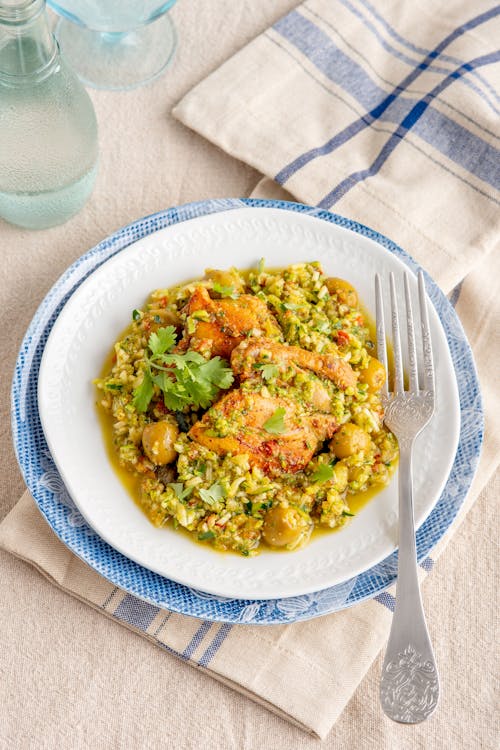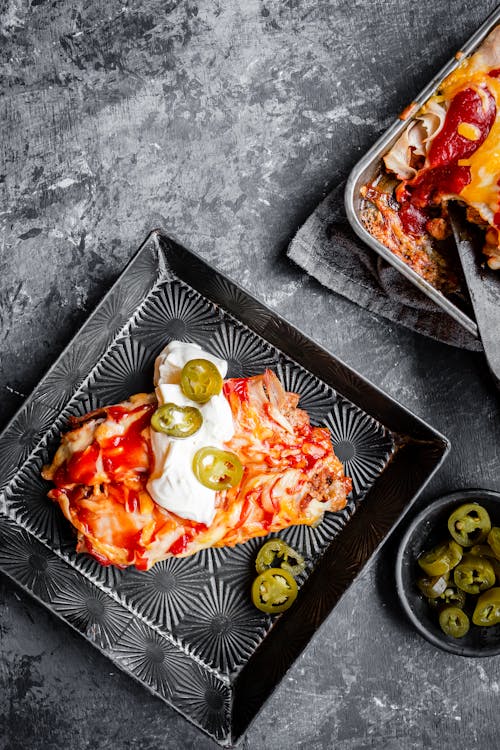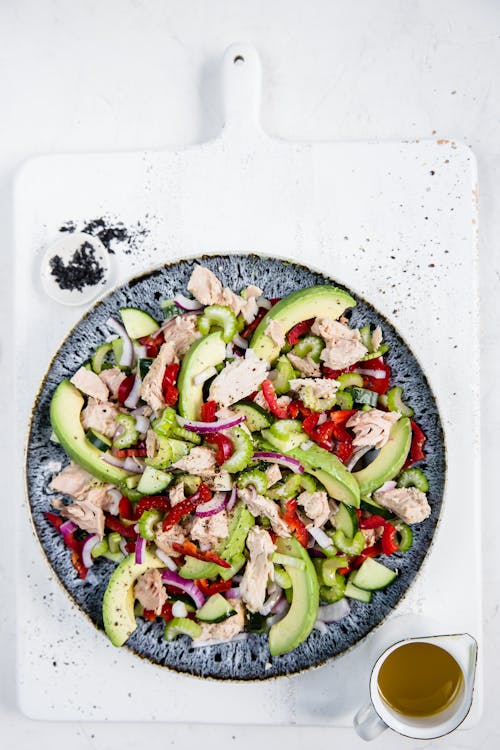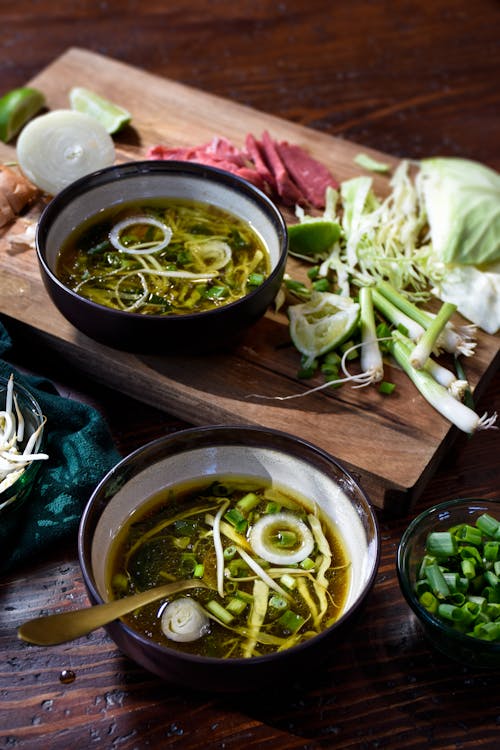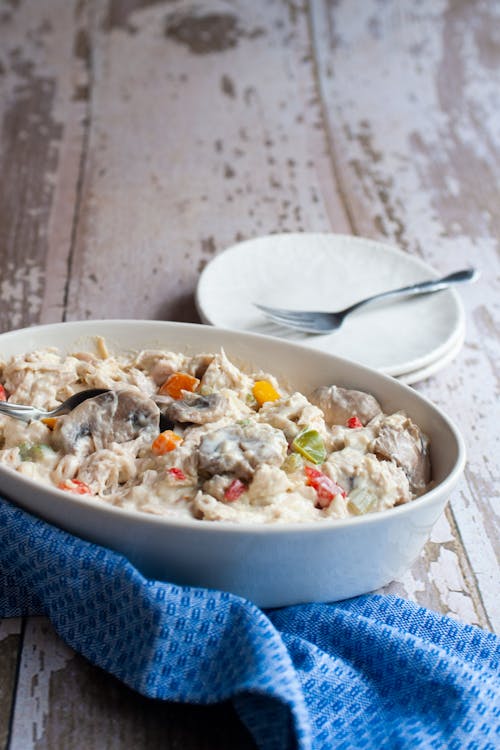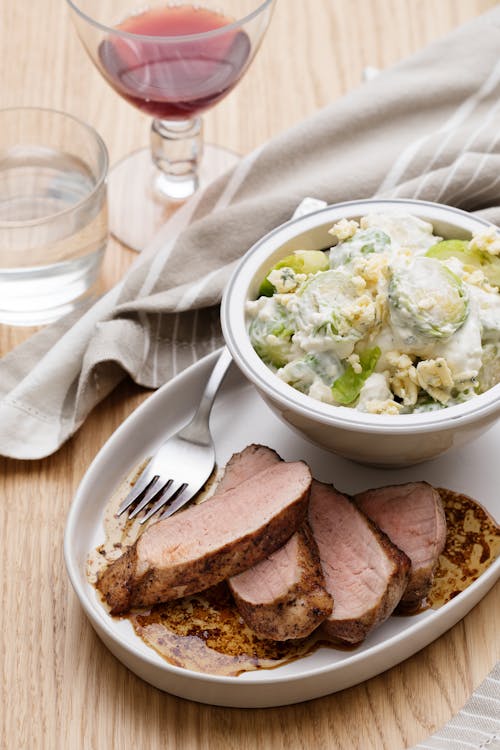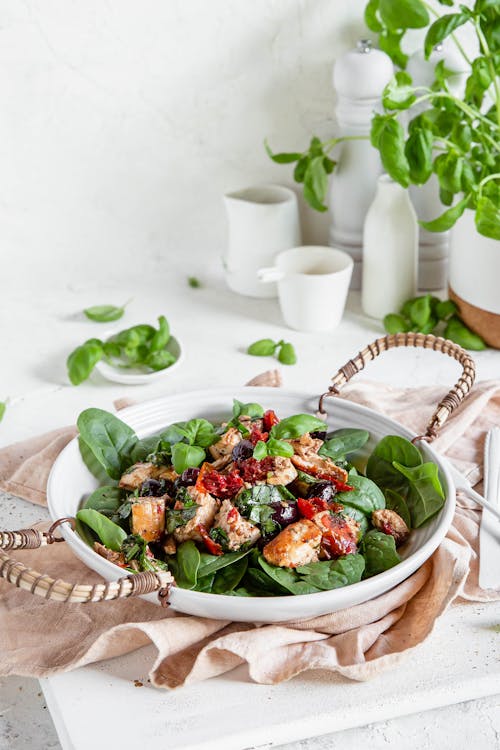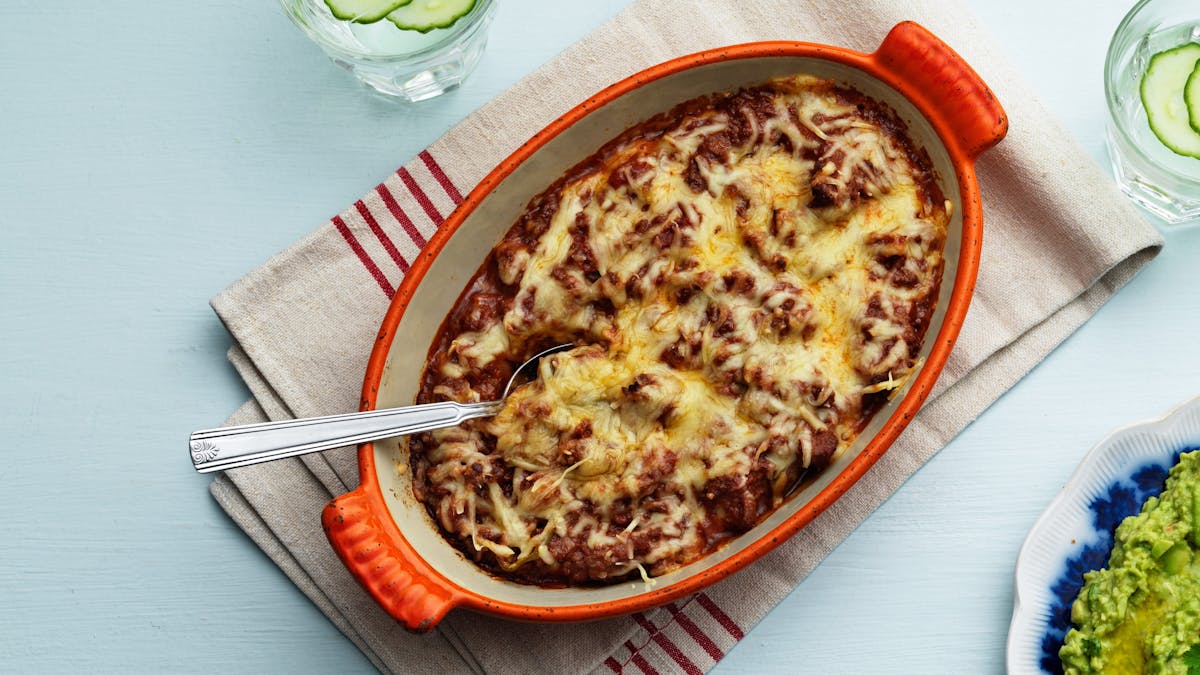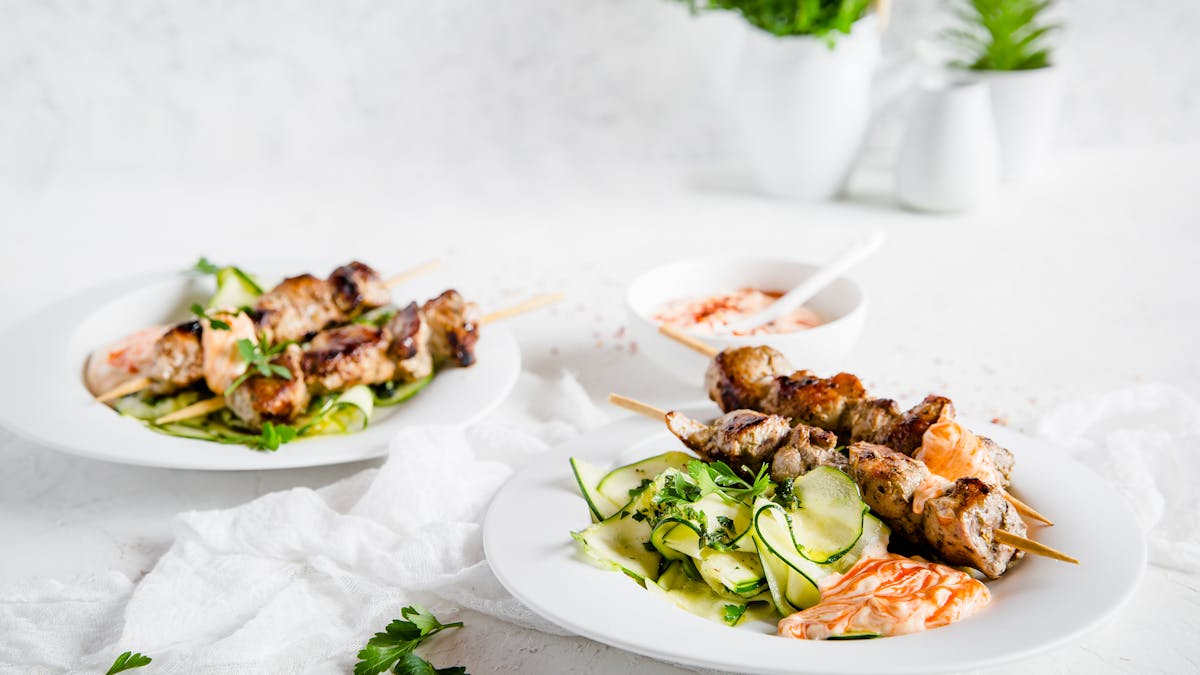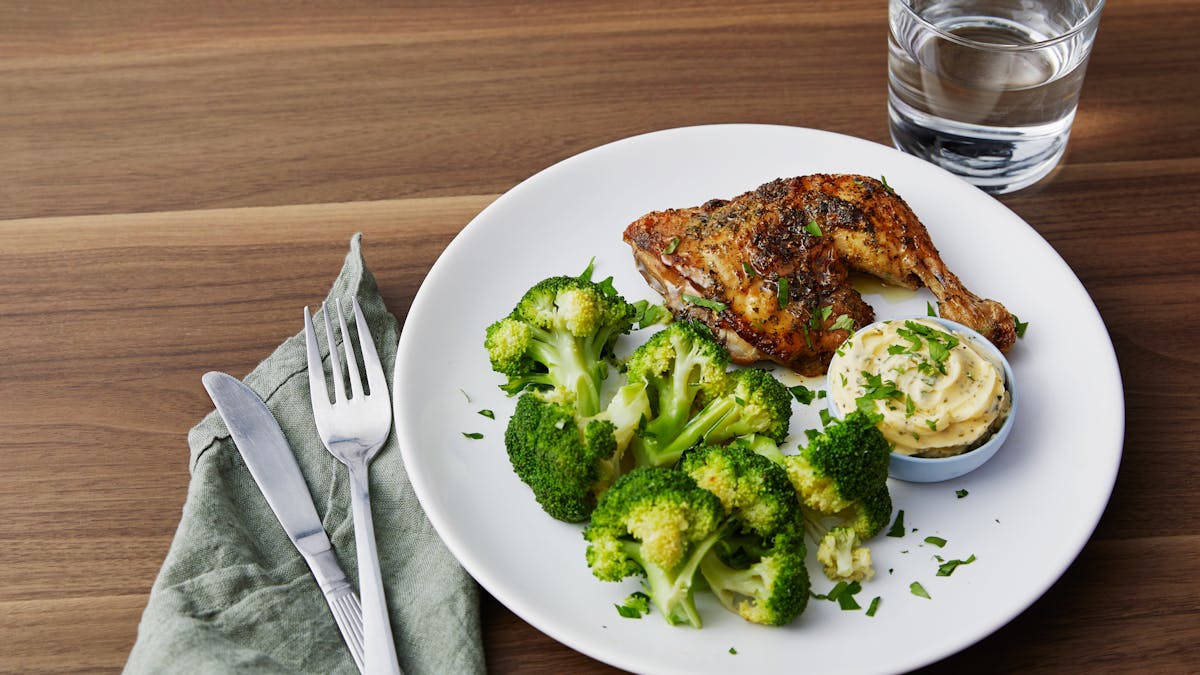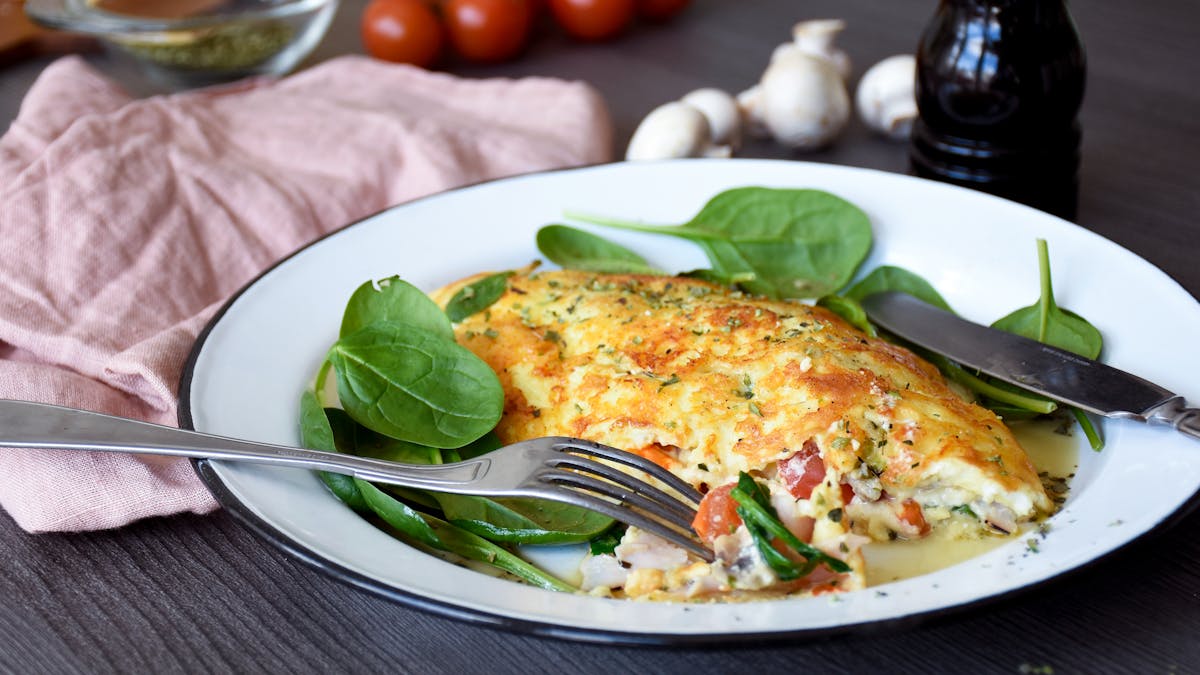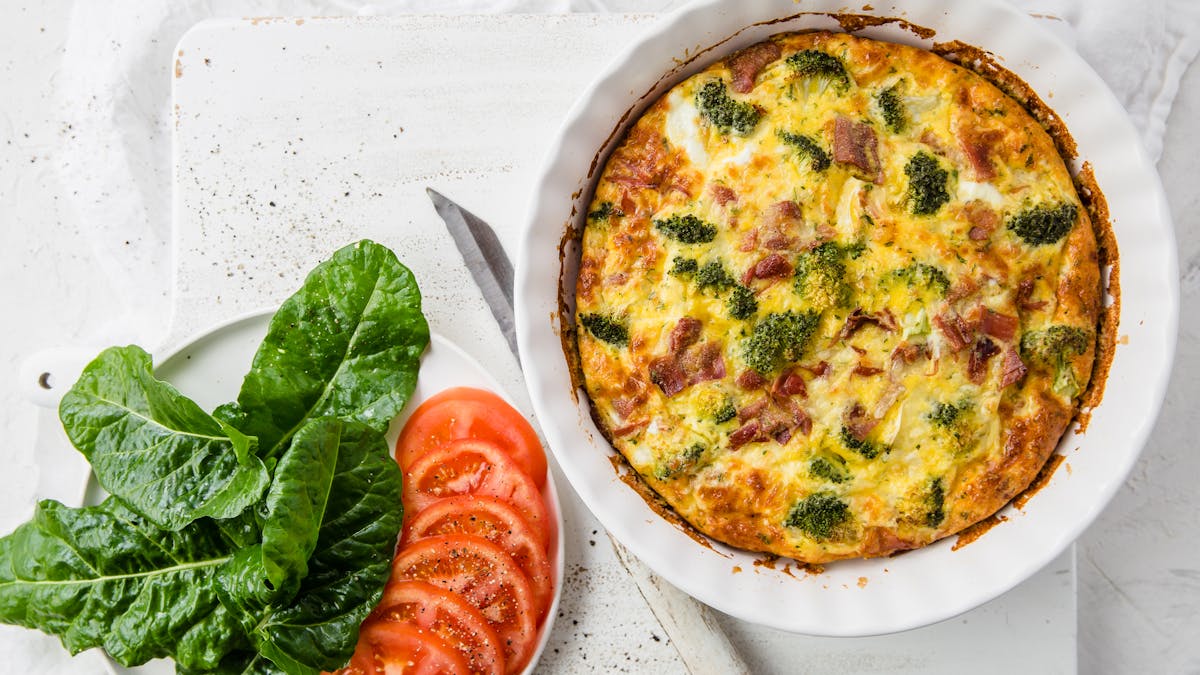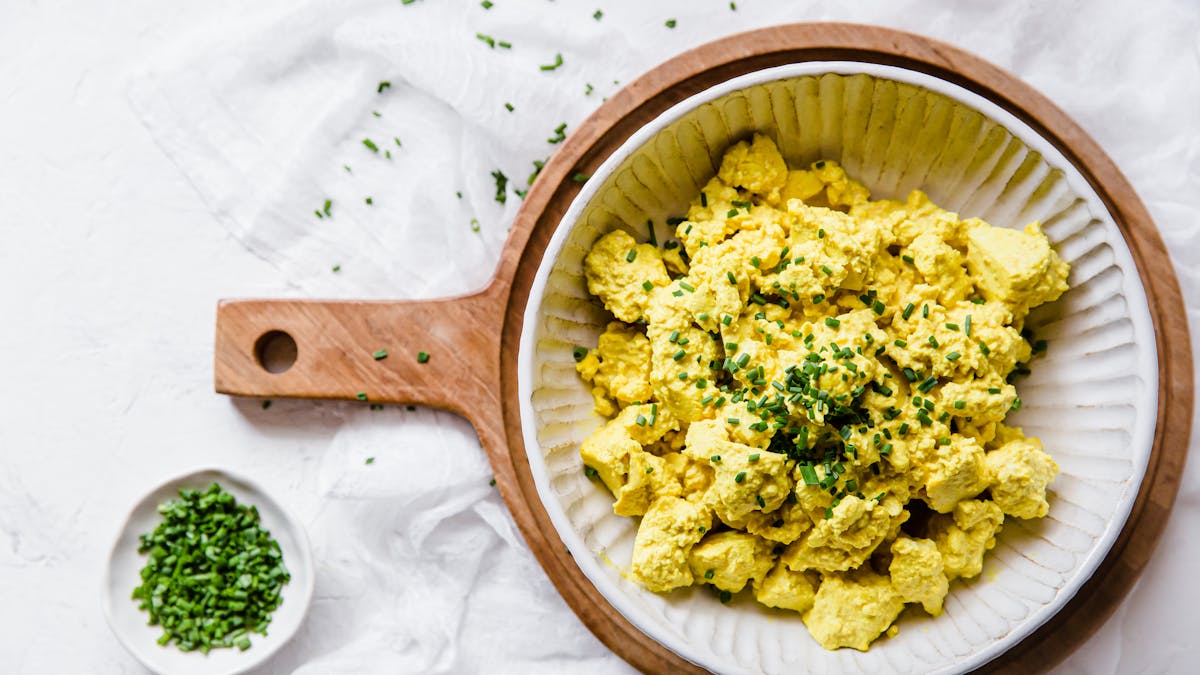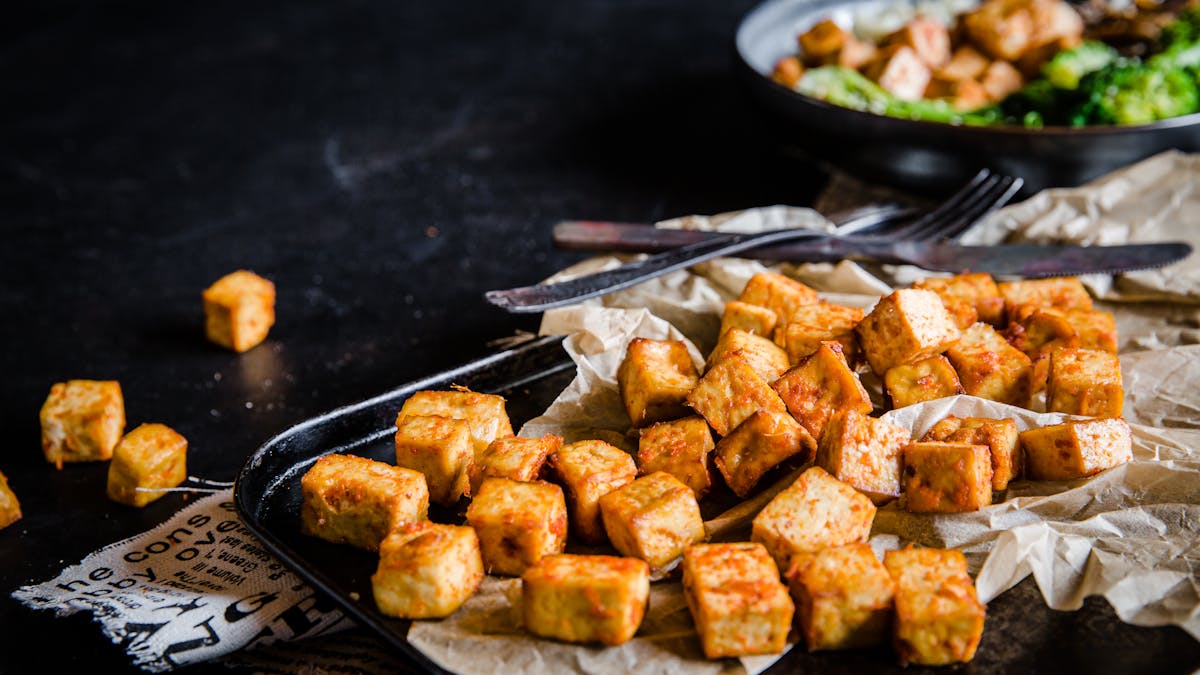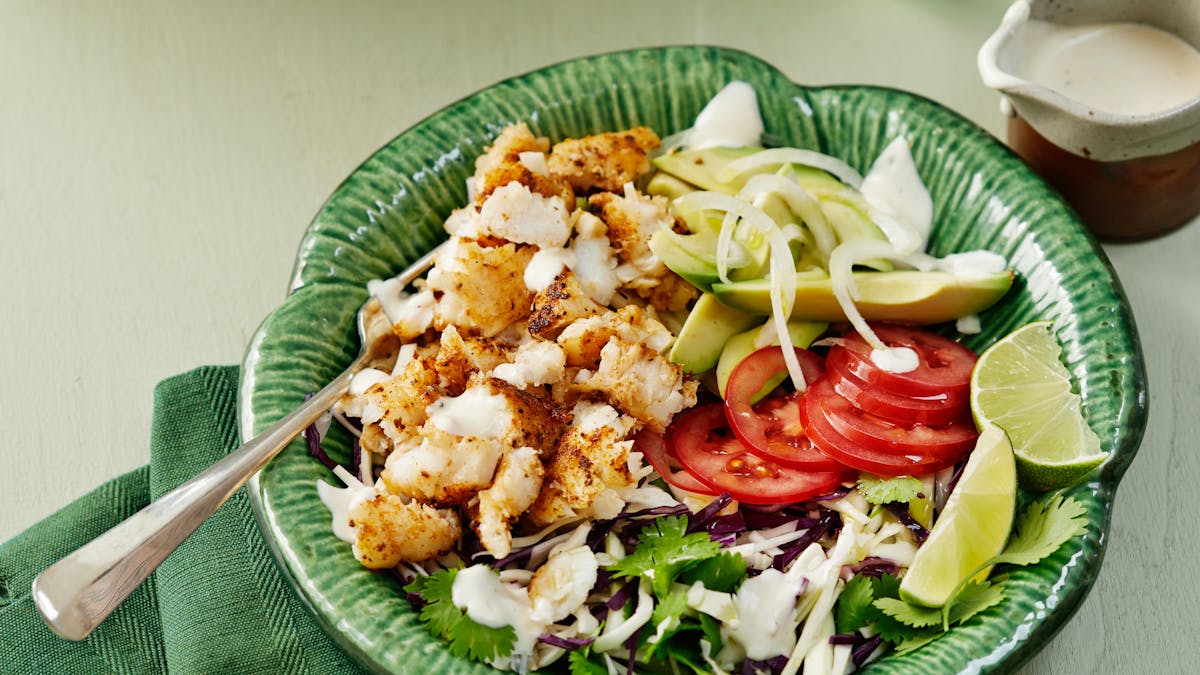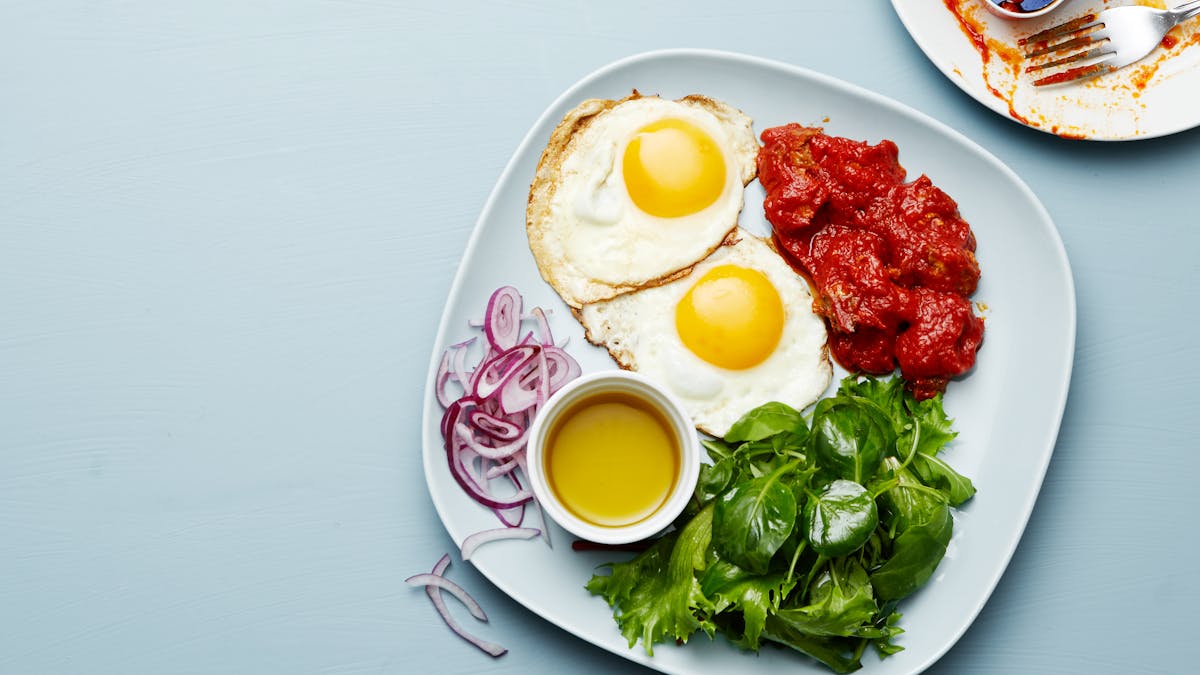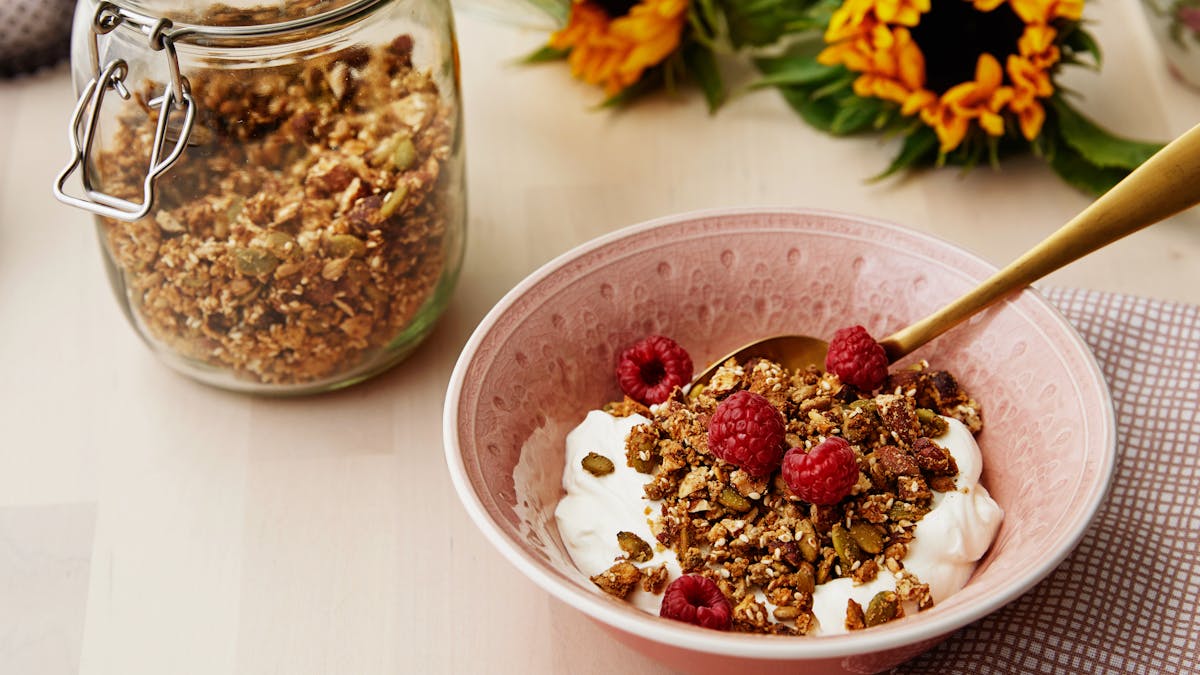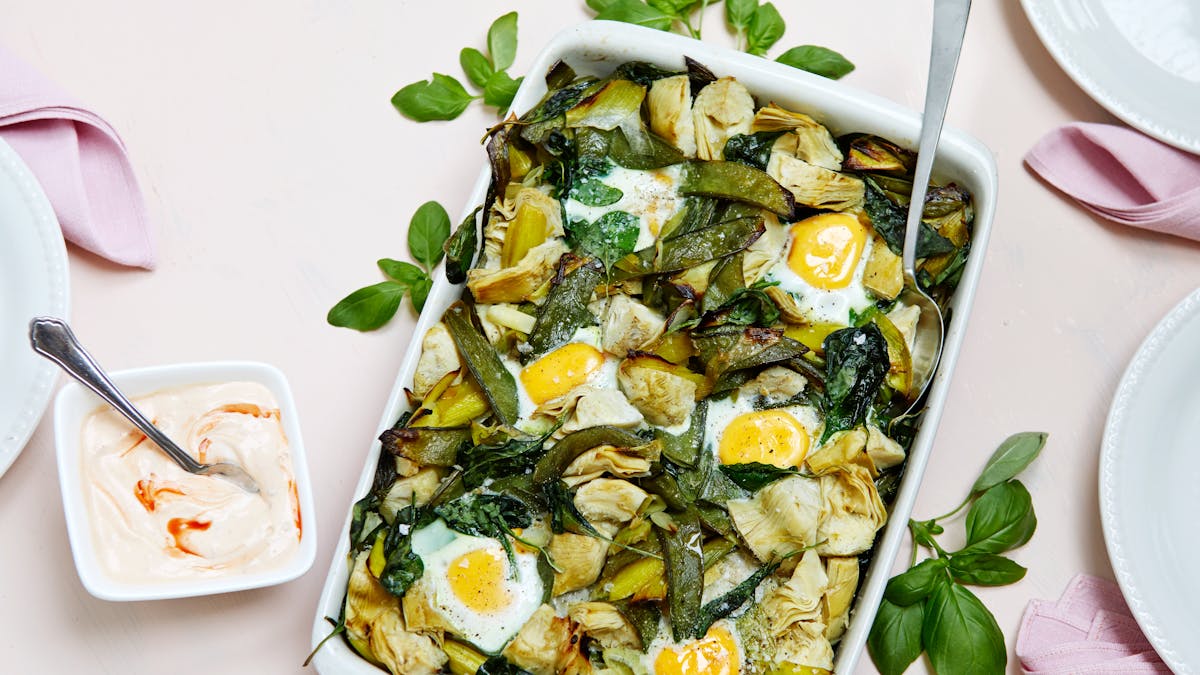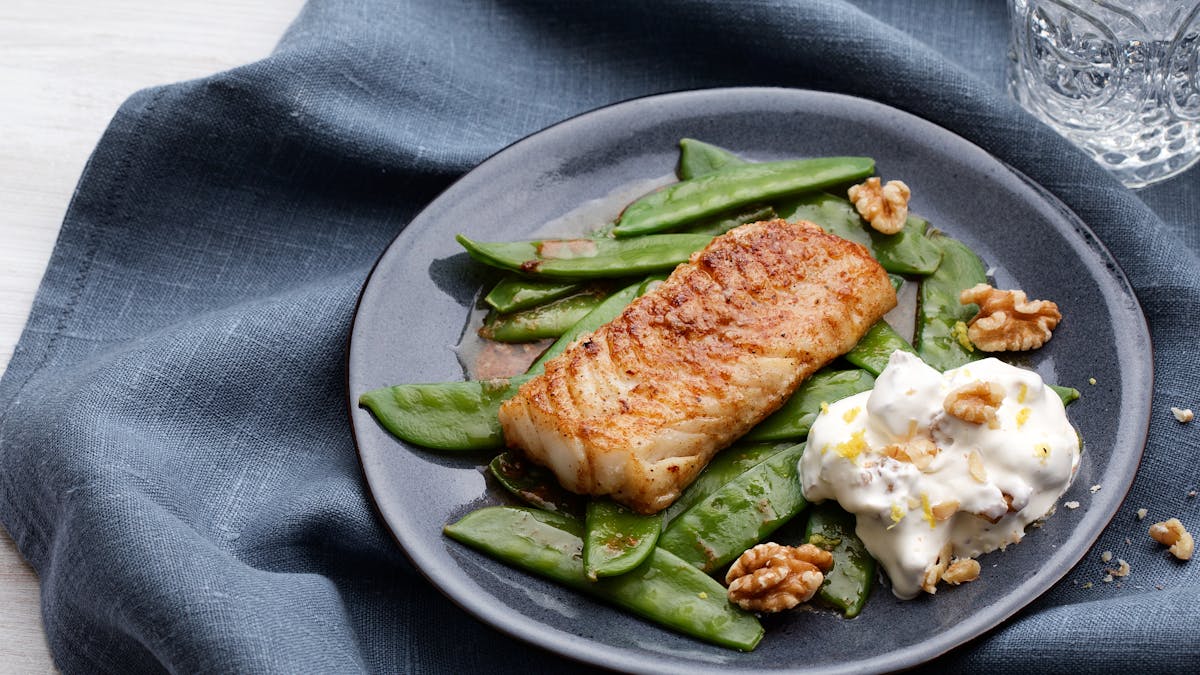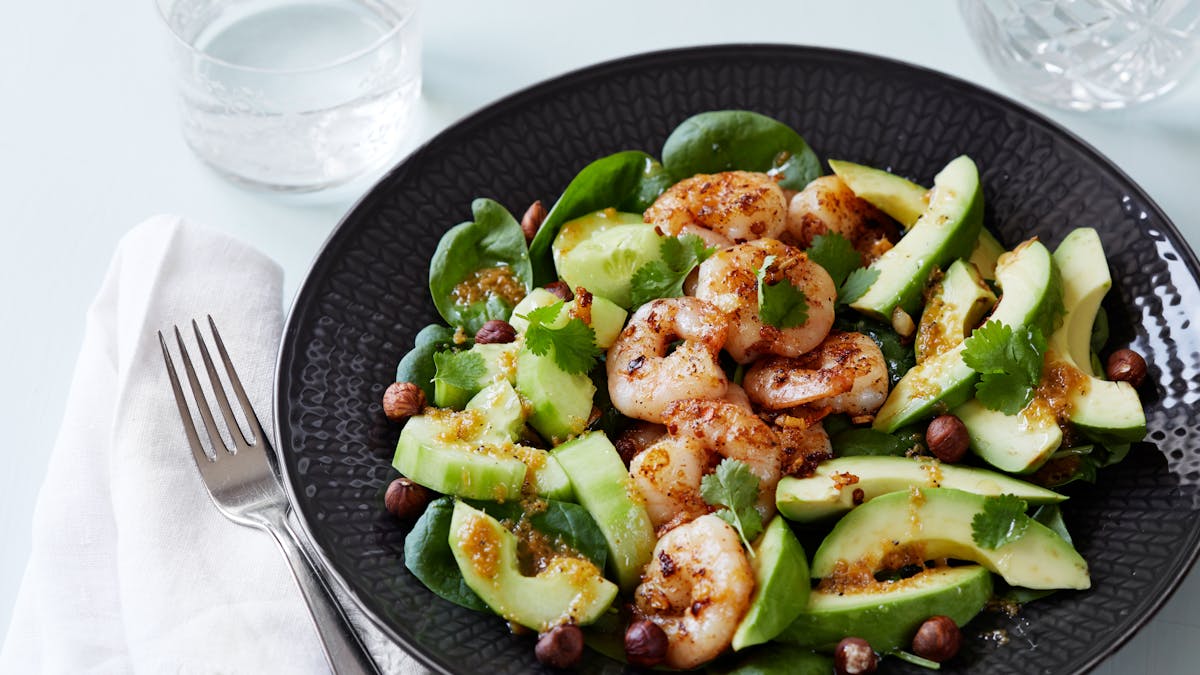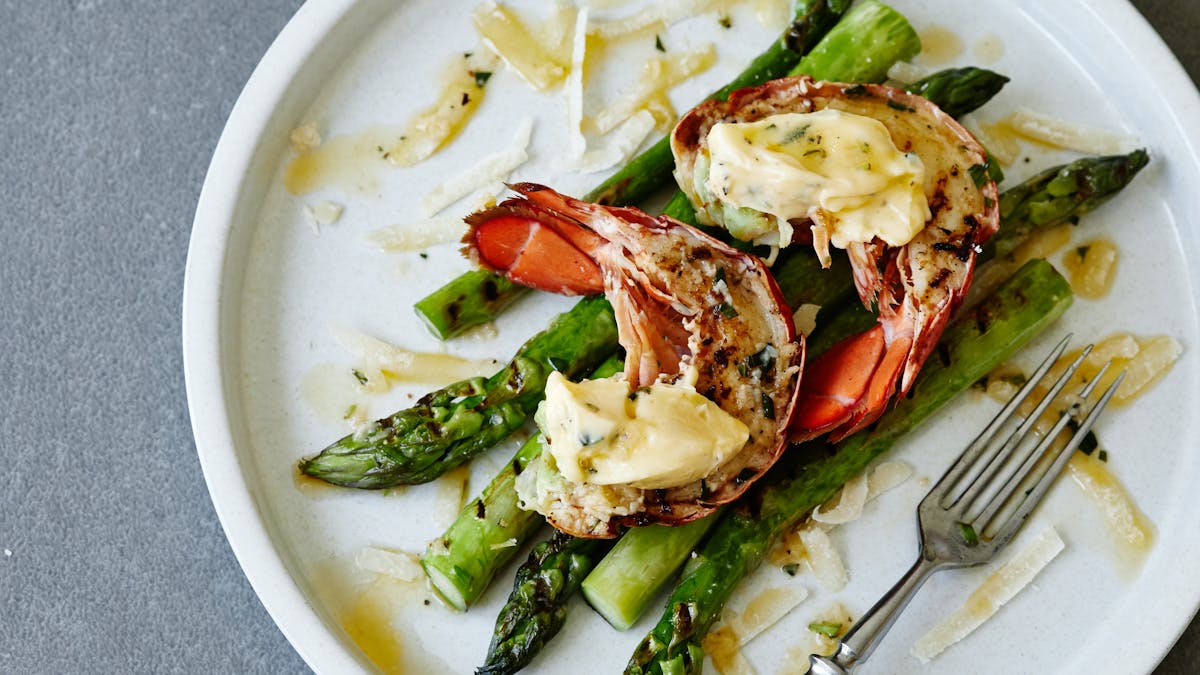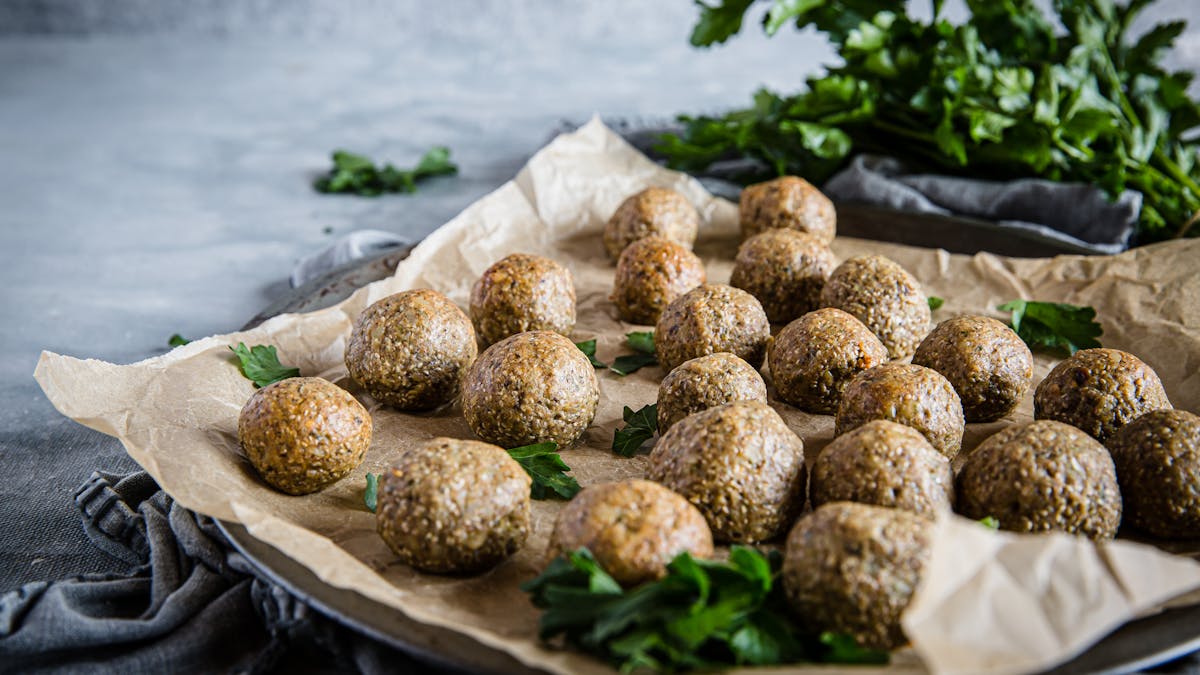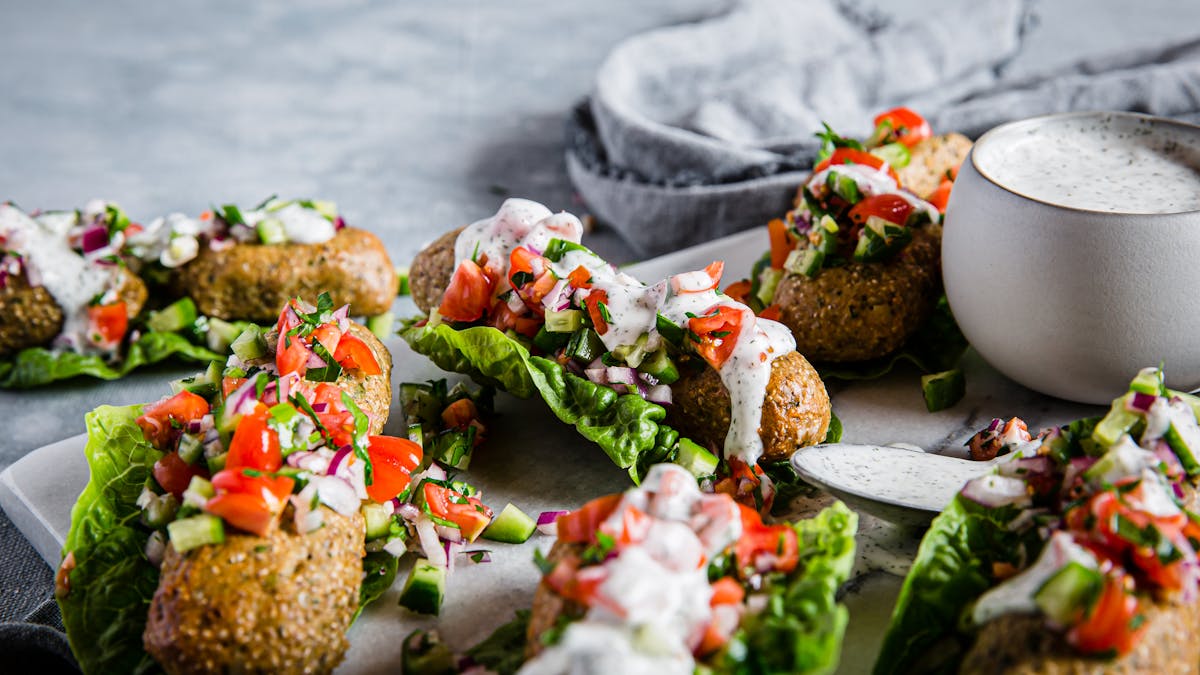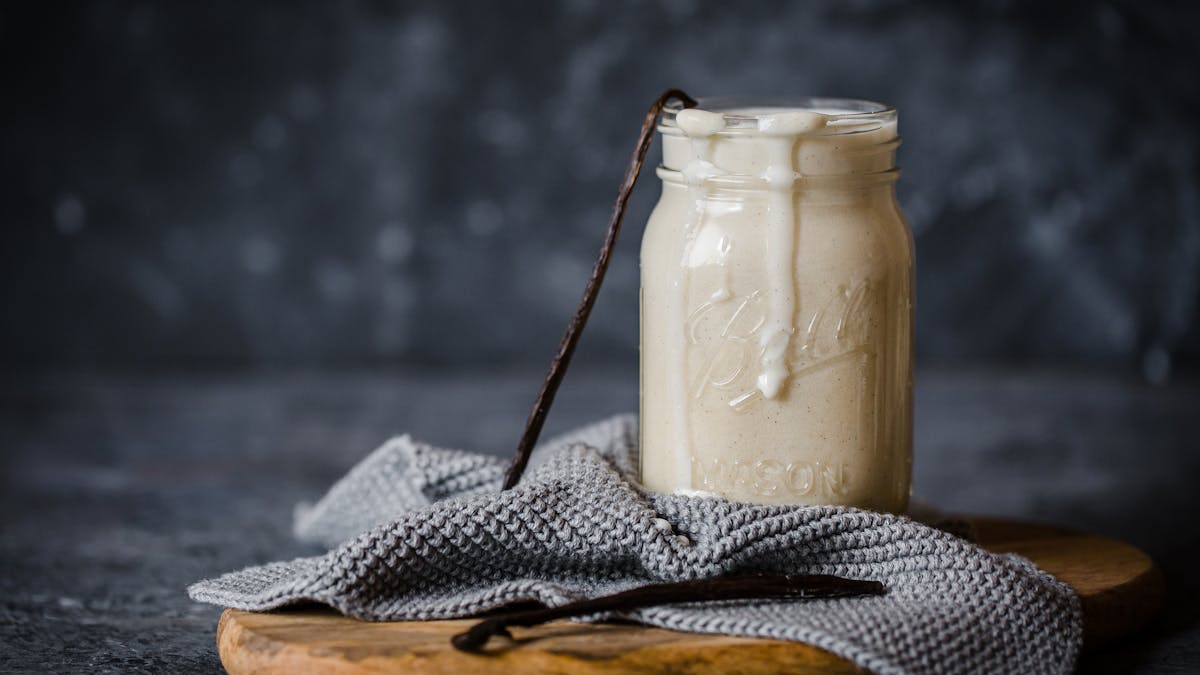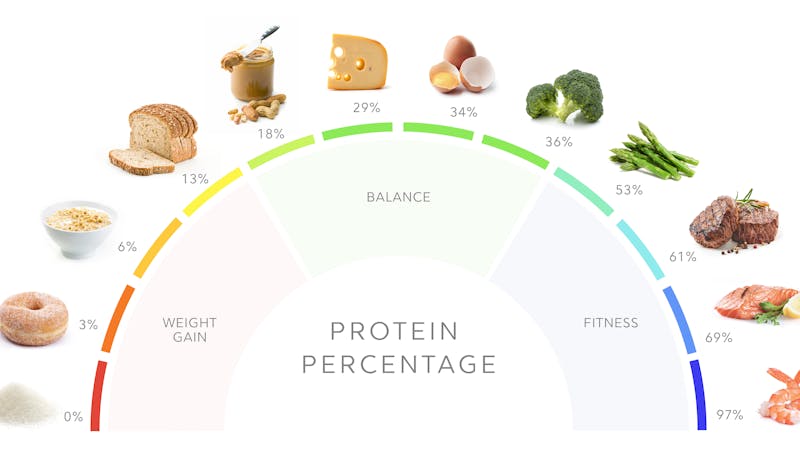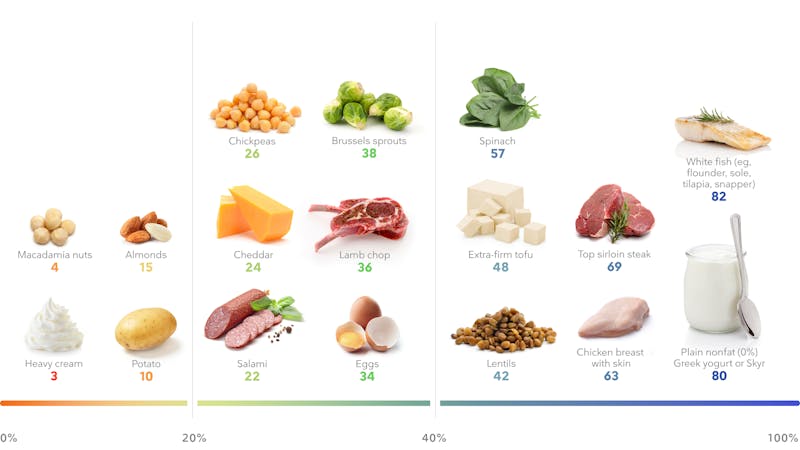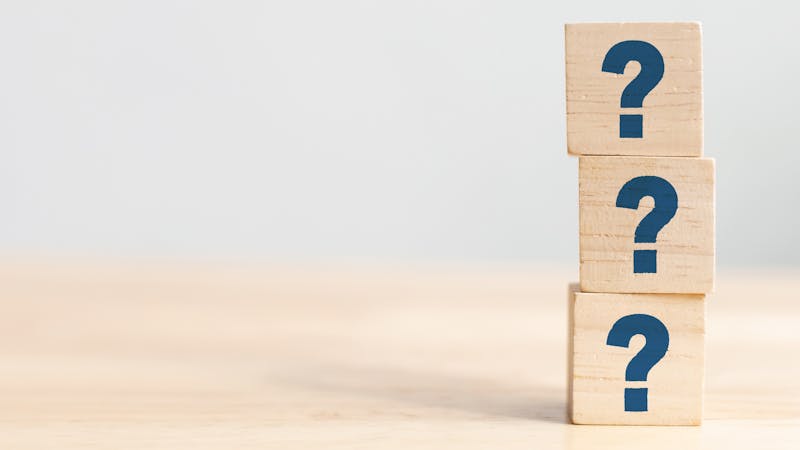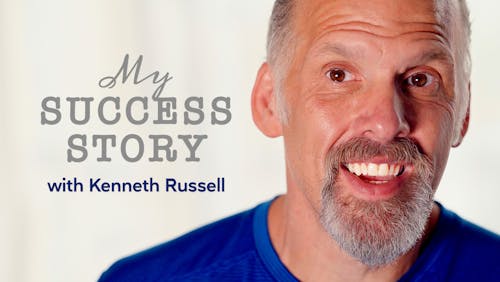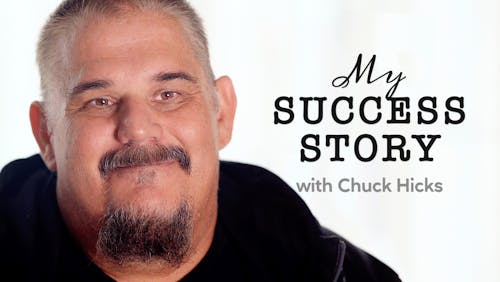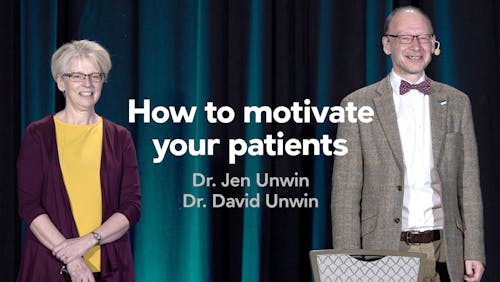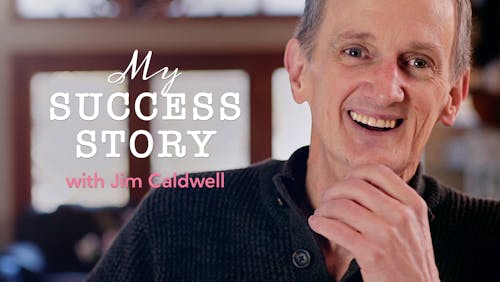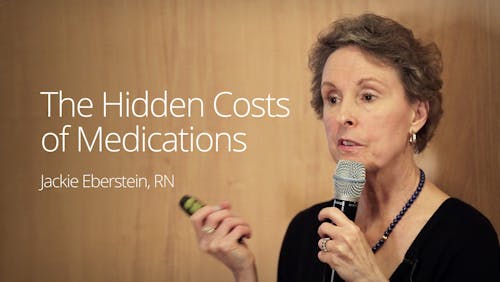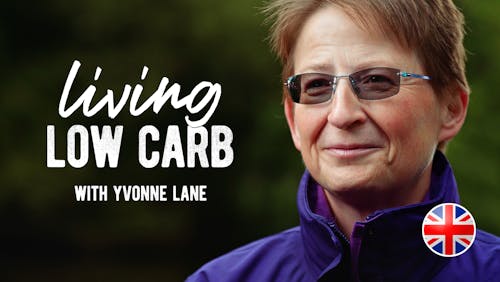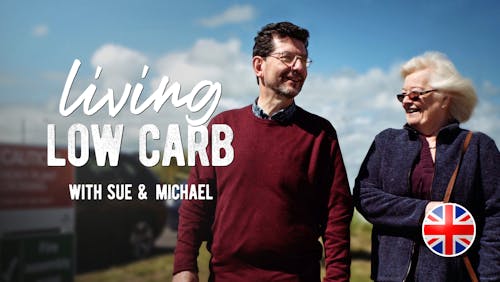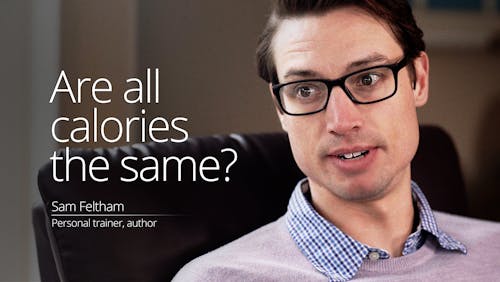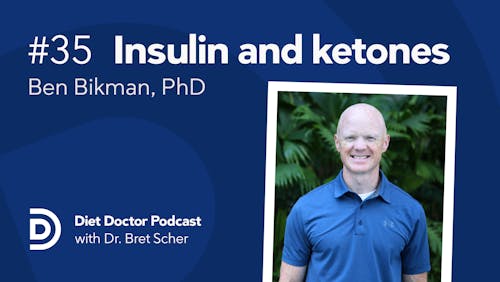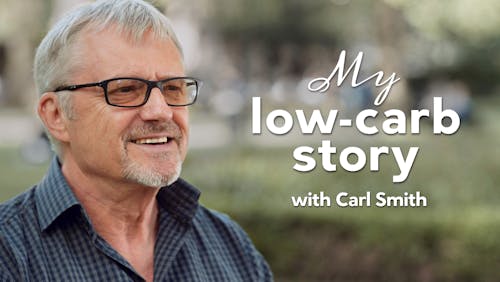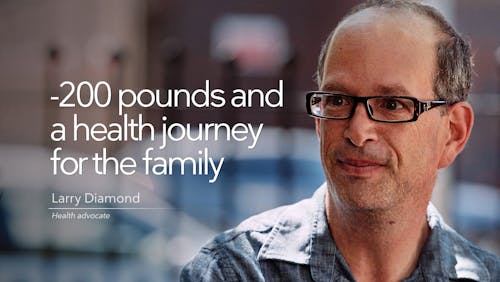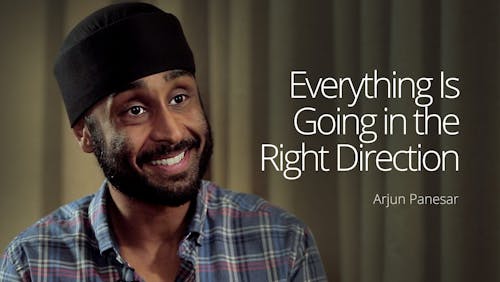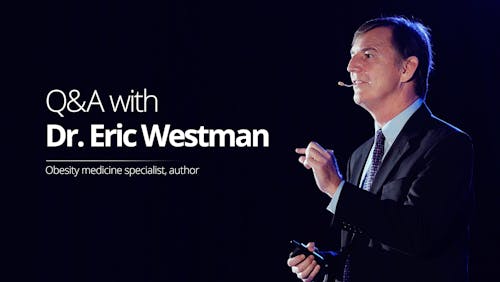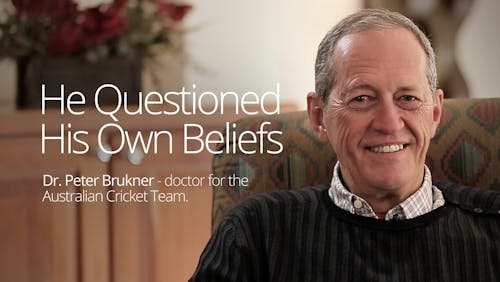The best high protein foods for weight loss
What are the best high protein foods that can help you lose weight? Foods that are minimally processed, filling, protein-rich, and provide maximal nutrition per calorie.
By contrast, the worst weight-loss foods are highly processed, high in calories, low in nutrients — and extremely easy to overeat.
In this guide, you’ll learn which high protein foods you should eat, which ones to limit, and which ones to avoid entirely if you want to lose weight in a healthy and effective way.
The top 8 high protein foods
- Meat: chicken, beef, pork, lamb, bison, game
- Eggs: whole eggs, egg whites
- Soy: tofu, black soybeans, edamame, tempeh
- Fish: white fish (halibut, sole, snapper, etc) and fatty fish (salmon, sardines, herring, etc.)
- Legumes: lupini beans, lentils, black beans, pinto beans
- Greek yogurt: nonfat, low-fat, or full-fat
- Shellfish: shrimp, crab, clams, lobster, mussels, scallops
- Protein powder: whey, egg, or plant based (pea, pumpkin seed, etc.)
Keep reading to learn more about the best high protein foods.
The image below shows the protein as a percentage of calories for different foods. The higher the number, the more protein the food provides per calorie.



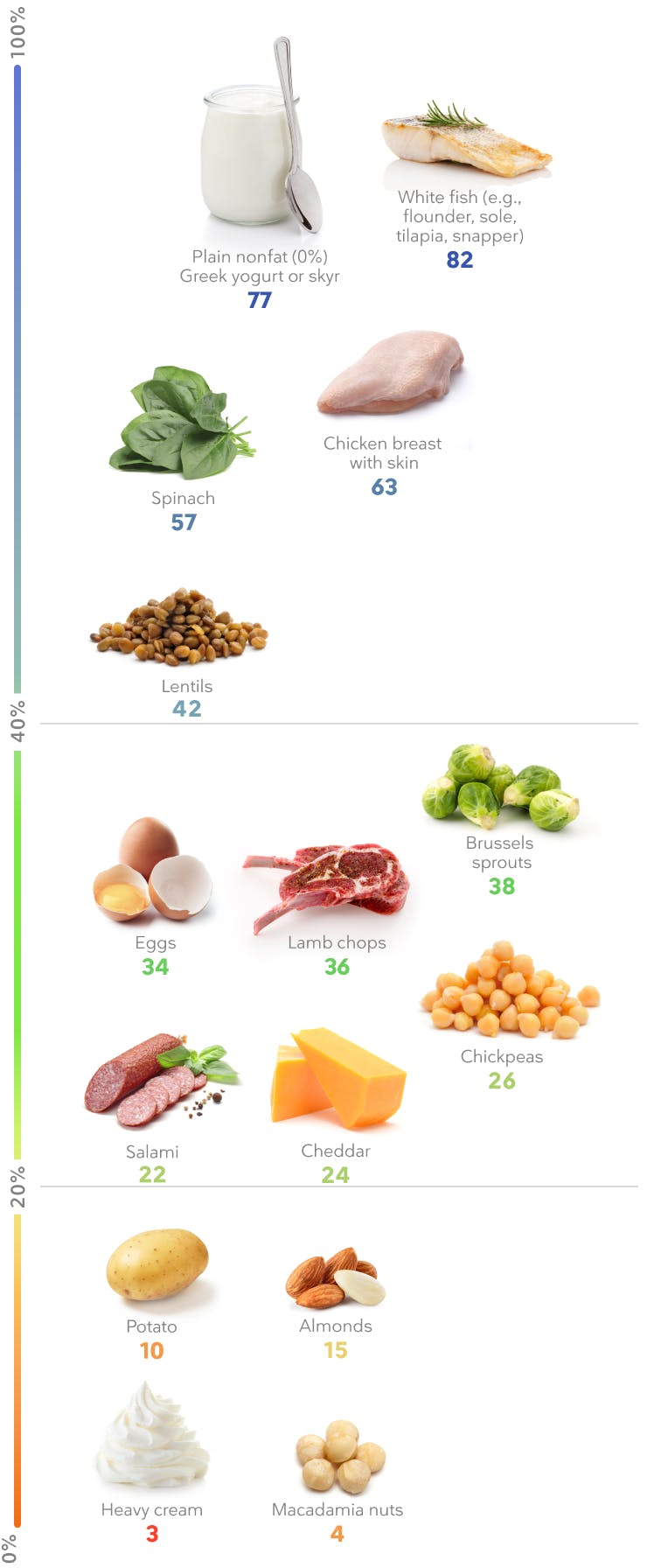


Key takeaways
What to eat and drink? Eat protein-rich foods like meat, seafood, non-starchy vegetables, eggs, dairy products, and legumes. Drink water, coffee, tea, or broth. Learn moreWhat to avoid? Avoid processed high-carb, high-fat foods (donuts, candy bars, ice cream, chips), foods high in refined carbs (cereal, bread, pretzels), sweetened beverages, fruit juice, beer, and sweet alcoholic drinks. Learn more
What to limit? Eat less added fats, below-ground vegetables, whole grains, cheese, nuts and consume less alcohol overall. Learn more
More high protein guides
More high protein guides
Why high protein for weight loss?
For healthy weight loss, focus on high protein foods. Why? High protein foods are high-satiety foods — the kinds that help you stay full and satisfied.
High protein foods provide essential nutrients that you need to stay healthy. Essential nutrients are the ones your body can’t make on its own, such as essential amino acids (the building blocks of protein), fatty acids, vitamins, and minerals. High protein foods are on average high in all of these nutrients.
By targeting foods that are high in protein, you are likely to end up meeting your essential nutrient needs and feeling full, which may help you lose weight.1
In this guide, we provide the “protein percentage” of foods. This percentage reflects how much protein contributes to a food’s total calories, excluding calories from fiber.
Fiber calories aren’t included because, unlike other carbohydrates, fiber isn’t broken down and absorbed by your digestive tract.2
Instead, fiber passes through your system until it reaches your colon, where it is either fermented by bacteria or eliminated, depending on the fiber type.3 Therefore, fiber is nearly calorie-free. Think of it as a nutrient for your microbiome, or gut bacteria.
To lose weight effectively without feeling hungry, eat foods with a high protein percentage.
How much protein should you eat?
Learn how much protein to aim for each day in this guide.You can quickly learn how to choose high protein foods in this video:
Foods to eat
You can generally eat as much as you want of the foods on this list.4 Getting plenty of variety is important, too! So it’s fine to sometimes choose foods that have a relatively lower protein percentage compared to others in the same category.
For instance, fatty steak has less protein per calorie than chicken breast. However, red meat is an excellent source of protein and minerals like iron. It’s also pleasurable and filling, so enjoy that steak.
Here is your list of high protein weight loss foods.5


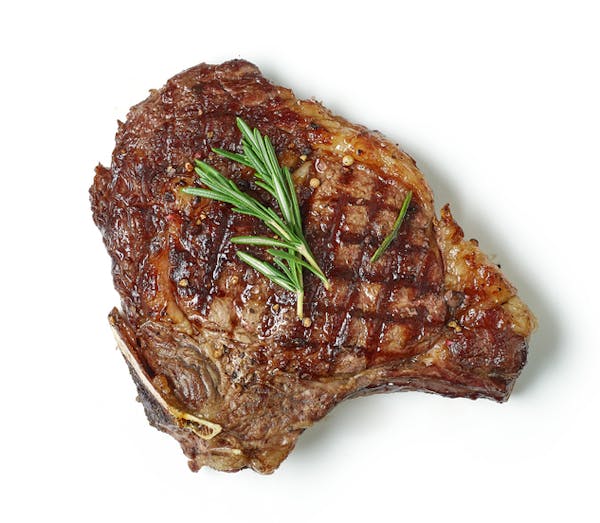

Meat and poultry
Meat and poultry — such as beef, pork, chicken, and turkey — are excellent food choices as part of an overall healthy weight loss diet.
Meat and poultry provide protein and many vitamins and minerals, including vitamin B12, magnesium, and potassium. Carbs? None. And science suggests that including meat and poultry in your diet may help you lose weight.6 Grill, broil, or roast your meat. Eat any parts that you like, including the skin and innards. Eating the whole animal is less wasteful and may be better for the environment. And while eating the skin on a chicken breast will slightly decrease its protein percentage compared to a skinless breast, you may enjoy your meal much more.
Is red meat healthy?
Are you concerned that eating red meat isn’t healthy? Read our full red meat guide to find out why those concerns may not be warranted.Protein percentage range: 85% (skinless turkey breast) to 20% (pork belly)




Seafood
Trout, tuna, shrimp, and crab are rich in potassium, magnesium, and iodine, among other nutrients. Fatty fish, such as salmon, provide higher amounts of essential omega-3 fatty acids — which have been linked to health benefits — than other fish.7
However, all kinds of fish and shellfish are nutrient powerhouses. Eating more seafood may slightly boost weight loss in some people, according to at least one study.8 Plus, fish and shellfish have some of the highest protein percentages of all the recommended foods. That means more protein per calorie, which means you’ll feel fuller longer.
If you want to lose weight, make sure your fish isn’t breaded or battered and fried. These add carbs and calories without improving seafood’s nutritional value.
Protein percentage range: 97% (shrimp) to 38% (mackerel)
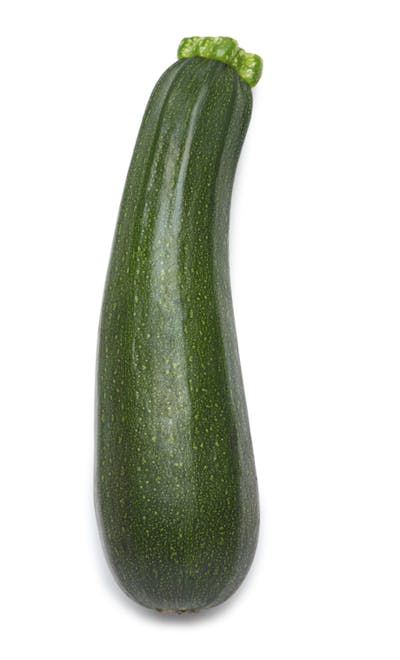



Non-starchy vegetables
Vegetables are among the best foods to include in a healthy weight loss diet.
Leafy greens and other non-starchy vegetables that typically grow above the ground — such as cauliflower, broccoli, cucumber, and mushrooms — are high in nutrients yet very low in calories and carbohydrates. They’re also rich in fiber and water, which can help you feel full.9
Enjoy them raw in salads with a creamy dressing. Grill or pan-fry your veggies in olive oil, butter, or ghee.
Although they provide less protein than the other categories on this “foods to eat” list, many non-starchy vegetables have a fairly high protein percentage.
However, unlike animal foods, protein from vegetables isn’t considered “complete” because it is low in one or more of the essential amino acids that your body needs to stay healthy.10 So eat your fill of these vegetables, but make sure to get plenty of protein from the other categories on this list.
Protein percentage range: 57% (spinach) to 15% (yellow bell peppers)




Eggs
Eggs are a great weight loss food because they help you stay full for several hours after eating.11 And although they’re high in cholesterol, they generally don’t raise blood cholesterol levels much.1213 Plus, eggs are one of the most versatile, popular, and inexpensive protein sources around.
Learn more about eggs
Do you want to learn more about eggs, including why the claims that they cause health problems are based on weak science? Read our full guide on the health benefits of eggs.One large egg provides just over 6 grams of protein and 1 gram of carbs. Although the egg white contains most of the protein, the golden yolk is richer in essential vitamins like vitamin A, iron, and selenium.
Whether they’re hard-boiled, scrambled, fried, or poached, eggs are a fantastic protein for breakfast or any time of day.
To get the best taste and most complete nutrition, choose whole eggs. On the other hand, egg whites are a great choice if you want to add more protein with few calories.
Protein percentage range: 85% (egg white) to 34% (whole egg)
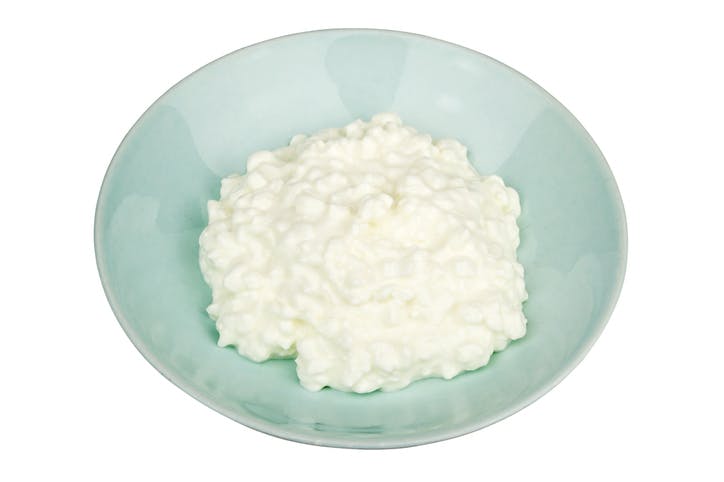



Dairy products
According to some studies, high protein dairy foods may provide weight loss benefits.14
Fermented dairy products like yogurt and cottage cheese are low in lactose (milk sugar) yet rich in nutrients.
Although plain nonfat and low-fat Greek yogurt and cottage cheese have higher protein percentages than full-fat varieties, it’s important to enjoy your food. So choose the type of yogurt and cottage cheese you like best.
Whey protein supplements (powders and shakes) have more protein than other dairy products. However, whey protein is a highly processed food that doesn’t provide a lot of nutrition aside from amino acids.15 As a general rule, go for other high protein dairy products instead unless you’re looking for an easy way to boost your protein intake.
What about cheese? You’ll find cheese in the list of foods to enjoy in limited amounts, below.
Protein percentage range: >90% (whey protein isolate) to 38% (full-fat Greek yogurt)
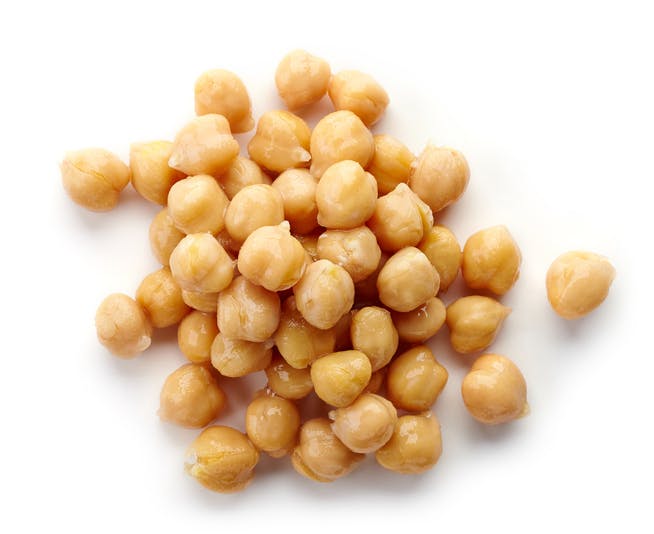

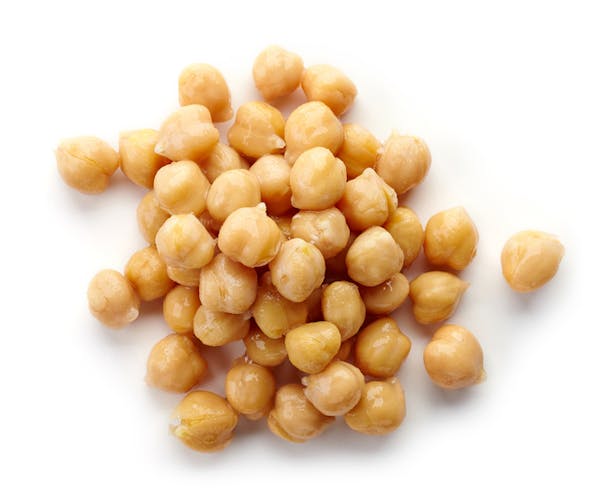

Beans, lentils, peas, & soy
Legumes — beans, lentils, peas, seeds, and soy — are a good source of protein and provide other essential nutrients. Yes, most are higher in carbs than the other foods on this list. However, they’re also high in fiber. Plus, as an excellent source of plant-based protein, legumes are perfect for vegetarian and vegan weight-loss diets.
One review of 21 trials found that people who included beans, lentils, and other legumes in their diet lost a small amount of weight without deliberately restricting calories.16
Additionally, consuming soy products has been shown to help reduce appetite and support weight loss in several studies.17
While soy is considered a complete protein, beans and legumes are low in one or more of the essential amino acids that you need to eat to stay healthy.18 The good news is, combining different plant proteins, such as beans and nuts, can provide adequate amounts of all the essential amino acids your body needs.19
Plant protein powder supplements are processed, so they lack the fiber found in whole foods. However, they are a good option for getting more protein with fewer carbs. For this reason, you may want to consider occasionally including plant protein powders if you’re a vegetarian or vegan who eats keto or low carb.
Protein percentage range: 80% (plant protein powder) to 26% (chickpeas or garbanzo beans)
What to drink
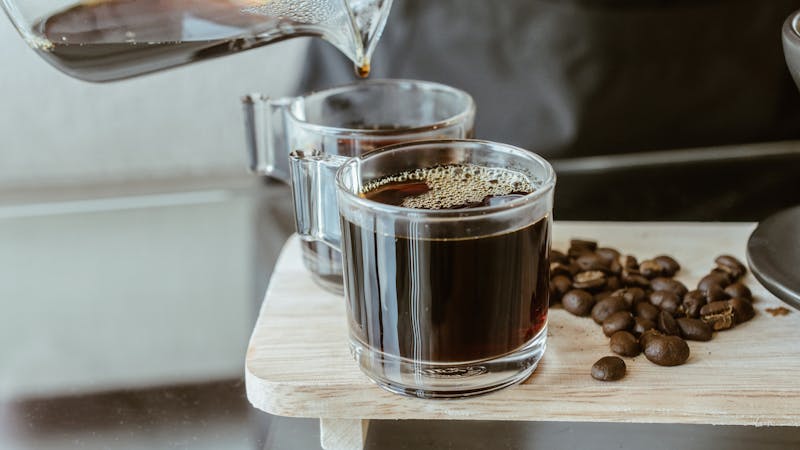



- Water: Whether still or sparkling, water is the best option. Drinking water may be beneficial for weight loss.20
- Coffee and tea: Research suggests that drinking caffeinated coffee or tea may help you lose a little weight by slightly boosting your metabolism.21 Most people can drink up to two to three cups of coffee or tea per day. However, drink less — or choose decaf coffee or herbal tea — if caffeine makes you feel jittery or causes other side effects.Coffee and tea are virtually calorie-free if consumed alone. If you must lighten or sweeten your beverage, add a little milk, cream, or sugar-free sweetener.
- Broth: Drinking broth or bouillon is a delicious way to stay hydrated and get some sodium and other minerals. Choose beef, chicken, or vegetable stock — or bone broth. This is one beverage that actually provides some nutrition, although the amount of protein in broth can vary from 1 to 9 grams per cup, depending on how it is made.
Foods and beverages to consume in limited quantities
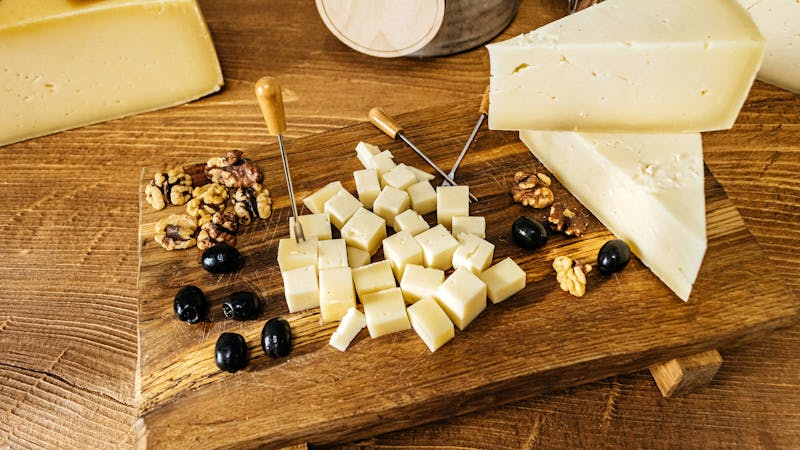



The foods on this list can be included, but they shouldn’t be the main focus if you want to lose weight. Although many of them are nutritious, their protein percentages aren’t high. Depending on what you like and the way you eat, you can enjoy them in small quantities on a frequent or even daily basis.
-
- Cheese: Cheese is delicious, low in carbs, and a great source of calcium. However, it doesn’t provide a lot of protein per calorie. Additionally, some people find that eating cheese causes cravings for more.22If you follow a keto or low-carb diet, feel free to have a small portion daily, if you like.Protein percentage range: 39% (part-skim mozzarella) to 20% (whole-milk ricotta)
-
- Nuts: They provide crunch, flavor, and enjoyment at meals and when snacking. Unfortunately, they don’t provide much nutrition per calorie.Also, once you start eating nuts, it can be difficult to stop. Eating too many nuts can increase your caloric intake, making weight loss more difficult.23Aim for no more than a small handful no matter what type of nut you choose. Also, portion them out and eat them in a small bowl rather than from the container.Protein percentage range: 18% (peanuts) to 4% (macadamia nuts)
- Low-protein processed meats: Yes, they’re flavorful and convenient. But foods like bacon, sausage, and salami contain far less protein than other meats. Can you still lose weight if you include them in your diet? Absolutely. But try to choose the processed meats listed in the “foods to eat” section most of the time.Protein percentage range: 23% (pork sausage) to 14% (hot dog)
-
- Added fats: Using butter, cream, or oil in cooking or adding these fats at the table can make vegetables and other foods taste delicious. But when your goal is weight loss, it’s important not to overdo fats, even if you follow a keto or low-carb diet. Add just enough for flavor. Remember, fat loss happens when you burn stored body fat rather than the fat you eat.24Protein percentage range: 0% for all fats and oils
-
- Starchy vegetables: Carrots, onions, beets, potatoes, sweet potatoes, and most other vegetables that grow below the ground are higher in carbs and lower in protein than non-starchy vegetables. Therefore, their protein percentages are much lower.If you’re on a keto or low-carb diet, you’re best off eating them in very small amounts, if at all. If you eat a vegan, vegetarian, or Mediterranean diet, you can enjoy starchy vegetables in modest amounts.Protein percentage range: 17% (beets) to 9% (parsnips)
-
- Low-sugar fruits: Although they’re rich in certain vitamins, minerals, and fiber, fruits lack sufficient protein. This is also true for the low-carb fatty types often grouped with vegetables: avocado, olives, and coconut.You can enjoy berries and non-sweet fruits and still lose weight if you keep portions modest. Aim for about one cup of berries, 20 large olives, half a medium avocado, or 3 tablespoons of shredded unsweetened coconut.Protein percentage range: 20% (blackberries) to 3% (olives)
-
- Whole grains: Whole grains are often praised for being nutritious, but they’re not particularly high in most nutrients — including protein. Still, some are higher in protein and therefore better than others for weight loss, such as quinoa, buckwheat, and wild rice.That said, these less-carby grains shouldn’t play a large role in your diet while losing weight. And if you’re a keto or low-carb eater, you may want to skip them altogether.Protein percentage range: 16% (quinoa, buckwheat, and wild rice)
-
- Low-carb alcohol: Limit your alcohol intake when trying to lose weight. It provides pure energy (calories) but zero nutrition. Indulging in alcoholic beverages can sometimes interfere with weight loss.25
If you want an occasional drink, choose dry wine or pure spirits such as whiskey, gin, vodka, or hard seltzer. Limit your alcohol intake to no more than one drink per day to maximize weight loss.
Protein percentage range: 0% for all alcoholic beverages
- Low-carb alcohol: Limit your alcohol intake when trying to lose weight. It provides pure energy (calories) but zero nutrition. Indulging in alcoholic beverages can sometimes interfere with weight loss.25
If you want an occasional drink, choose dry wine or pure spirits such as whiskey, gin, vodka, or hard seltzer. Limit your alcohol intake to no more than one drink per day to maximize weight loss.
- Sweeteners: Sugar-free sweeteners are controversial. Some people may find that using them helps them lose weight. However, others may experience carb cravings when they consume sweeteners.26If you don’t already know which group you belong to, you can experiment with different types of sweeteners to see how they affect you. Symptoms to watch for include cravings, hunger, or digestive discomfort.When using sweeteners, choose types that are calorie-free or nearly calorie-free.Protein percentage range: N/A for non-caloric sweeteners
Foods and beverages to avoid




It’s clear that eating a low-carb diet can be extremely effective for losing weight. 27Similarly, cutting back on fat can also be a winning weight loss strategy.28 And, of course, eating more protein can help you feel full so you naturally eat less and lose weight.29
On the other hand, eating foods high in refined carbs and fats — rather than prioritizing protein — can promote weight gain.30
Highly-processed foods have protein percentages near zero, and they’re loaded with empty calories. When protein intake is low — due to being diluted by large amounts of fat, carbs, or both — people are driven to eat more in order to meet their protein needs.31
Steer clear of the foods on this list:
- Ultra-processed high-carb, high-fat foods: These foods have three strikes against them: they’re high in refined carbs, high in refined fats, and low in protein and other essential nutrients. The high-carb plus high-fat combination is by far the worst for losing weight because it’s so tempting to overeat. Indeed, some researchers suggest that these foods can be addictive.32Among the most common offenders are donuts, candy bars, potato chips, fries, ice cream, and cookies. Avoid these and similar products entirely when trying to lose weight and improve your health.
- Foods high in sugar and refined carbs: Ditch the sugar and anything made with it: jelly, syrup, candy, and others. Honey, maple syrup, and agave may seem more “natural,” but they are still sugars. Read labels for hidden sugars, especially in condiments, salad dressings, packaged foods, and “lite” treats such as nonfat frozen yogurt.Likewise, stay away from bread and pasta, refined grains like rice and corn, fat-free chips, crackers, and other snack foods. All of these provide little nutritional value and satiety per calorie. In fact, they may increase your hunger and cravings.33
- Sugar-sweetened beverages and fruit juice: Soft drinks may be the most common high-sugar beverages, but many others exist, such as sweet tea, punch, lemonade, energy drinks, sports drinks, and flavored coffee creations. All are loaded with empty calories.
Avoid all types of fruit juice as well. What about 100% unsweetened juice? That’s also packed with “natural” sugar and virtually no protein. - Beer and sweet alcoholic beverages: Beer is high in carbs. Sweet wines and liqueurs (Amaretto, Kahlua, and others) are high in sugar. Mixed drinks that combine alcohol with syrupy mixes are clearly not a good beverage choice.
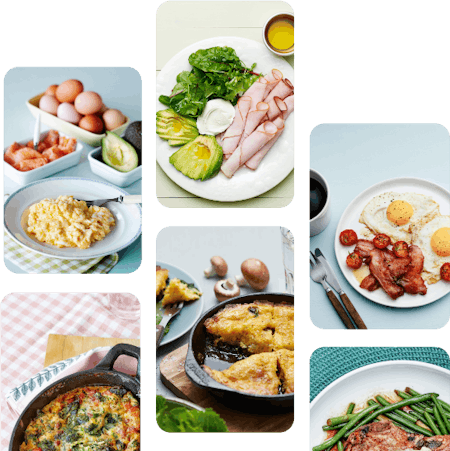
Our high protein recipes are marked with a blue outline around the colored carb circle so you can easily spot them. Check out our simple, tasty, and filling high protein recipes for weight loss: Personalized meal planner Do you want a personalized weight loss meal plan based on your preferences? Our personalized meal plans are designed to suit your needs and goals. They feature delicious, easy-to-prepare meals that you’ll love — with all of the planning done for you. Just answer a few questions — such as how much weight you want to lose and what kinds of food you like to eat — and you’ll receive a customized weight loss meal plan almost instantly. Although protein is found in a wide variety of animal and plant foods, the amounts can differ quite a bit. Here are the top 8 high protein foods to choose from, along with a few ways to include them in your diet.34
Meat is tasty, filling, and an excellent protein source. Contrary to criticisms that have been made about red meat (beef, pork and lamb), eating it on a regular basis may potentially be beneficial for weight loss, blood sugar control, and insulin resistance.35
Additionally, red meat intake has been shown to increase muscle mass and strength when combined with resistance training.36 And frequent poultry (“white meat”) consumption may also be helpful for losing weight.37
Of course, the rest of the diet matters as well, so it can often be a challenge to attribute a benefit to one particular food. Here are the amounts of protein per 100 grams (3.5 ounces) of cooked meat (about the size of a deck of cards), unless otherwise noted: Cooking an extra portion of grilled or roasted meat for dinner and using the leftovers for lunch the next day can save time while helping you meet your protein requirements. Popular Diet Doctor meat-based recipes: It’s tough to find a food more versatile than the egg. Whether used in omelets, quiches, baked goods, or served alone, eggs provide high-quality protein at an affordable price.38 And whole eggs seem to have the edge over egg whites for building muscle.39
Three large eggs provide about 19 grams of protein. Although often viewed as a breakfast staple, eggs are a smart protein choice anytime. Keeping a supply of hard-boiled eggs in the fridge sets you up with a great grab-and-go protein option for busy days. Popular Diet Doctor egg-based recipes: Soy is the only plant protein source that provides adequate amounts of all nine essential amino acids your body can’t make on its own.40 In some studies, soy protein has been found to provide appetite control and weight loss benefits comparable to meat.41 And like eggs, soy is versatile and economical. We realize that soy is a controversial topic. In our food policy on soy, we discuss why the benefits may outweigh the risks of soy, especially for vegetarians and vegans. Several protein-rich soy products are low enough in net carbs to fit low-carb or keto lifestyles: Buy a bag of frozen edamame beans and sprinkle some shelled ones into soups and salads, or steam them as a vegetable side dish. Fried firm tofu can make a great, crispy, high protein alternative to salad croutons. Popular Diet Doctor soy-based recipes: Like meat and poultry, fish is an excellent source of protein. In addition, oily or fatty types are rich in essential omega-3 fatty acids, which may have some beneficial effects on health.42 What if you don’t like some types of fish, especially those that taste too “fishy”? Good news: all kinds of fish are rich in high-quality protein and other nutrients. Here are the amounts of protein in 100 grams (3.5 ounces) of cooked fish (about the size of a deck of cards): Fresh fish is delicious when consumed the same day it’s prepared. However, smoked, frozen, and canned fish are also great options that have longer shelf lives, take less time to prepare, and are less expensive than fresh. Popular Diet Doctor fish-based recipes: Beans and other legumes can be good protein options for vegetarians and vegans. They’re high in fiber, and a few trials suggest that a legume-rich diet may decrease insulin resistance and reduce heart disease risk factors in some people.43 However, the protein in legumes is less easily absorbed than protein from animals and doesn’t provide all the essential amino acids in the amounts your body needs.44 Additionally, most legumes are considerably higher in net carbs than the other protein sources in this guide. Here are the protein and net carb counts for one serving of various cooked legumes: When choosing yogurt, go for Greek. It’s made by straining the liquid whey from yogurt, resulting in a thicker product that’s higher in protein and lower in carbs than other types. In one study, a higher-protein yogurt snack reduced hunger and increased fullness more than a lower-protein yogurt snack.45 Most plain Greek yogurts contain about 15-18 grams of protein and 5 grams of carbs per 170-gram (3/4 cup) container. However, make sure to read nutrition labels, as protein and carb counts vary from brand to brand. Try Greek yogurt as a sour cream substitute, topped with chopped nuts, or simply enjoy its creamy goodness alone. Popular Diet Doctor recipes featuring Greek yogurt: Various types of shellfish are popular because of their delicate flavor and texture. Most are rich in high-quality protein and other essential nutrients. One notable exception is oysters, which are relatively low in protein compared to other kinds of shellfish.46
Crustaceans like shrimp, lobster, and most crab are essentially carb-free. However, mollusks like clams, mussels, and scallops do contain some carbs —something to keep in mind if you’re on a strict keto diet. Check out this list to see how much protein you’ll get from your favorite shellfish (values are per 100 grams/3.5 ounces of cooked shellfish, except where noted): While fresh shellfish is always a treat, canned varieties can be handy to keep in the pantry for a quick boost of protein. Popular Diet Doctor shellfish recipes: At Diet Doctor, we recommend consuming mainly minimally processed foods. So you may be surprised to see protein powder on this list. We’ve included it because it may be helpful for some vegans and vegetarians who struggle to meet their protein needs on a keto or low-carb diet. This is especially true for vegans who don’t consume soy. So while we will always recommend that you choose fewer processed foods, we feel that occasionally using protein powder might make sense for some people. Plant-based protein powders include pea, pumpkin seed, and various grain and legume mixtures. Most provide about 20 grams of protein per serving, and many are low in carbs. For more information and suggestions, see our vegan essential nutrient needs guide. Here are three Diet Doctor recipes featuring protein powder: Get instant access to healthy low-carb and keto meal plans, fast and easy recipes, weight loss advice from medical experts, and so much more. A healthier life starts now with your free trial!
High protein weight loss recipes
If a lunch, dinner, or main course has more than 25% protein and includes at least 30 grams of protein (25 grams for breakfasts), we consider it a high protein meal. Our other recipes, such as desserts and bread, need to have at least 25% protein per serving to be classified as high protein.
The top 8 high protein foods
1. Meat
2. Eggs
3. Soy
4. Fish
5. Legumes
6. Greek yogurt
7. Shellfish
8. Protein powder
Summary
Knowing which foods are highest in protein can help you meet your protein needs. But don’t be concerned if you either don’t like or prefer to avoid some of the foods on the list. As you can see, there are many high protein options. Choose the kinds you like, be sure to eat one or more protein serving at every meal, and try to mix it up a bit for variety.Start your FREE 7-day trial!
Weight loss
The best high protein foods for weight loss - the evidence
This guide is written by Franziska Spritzler, RD, Dr. Bret Scher, MD and was last updated on June 19, 2025. It was medically reviewed by Dr. Bret Scher, MD on September 23, 2022.
The guide contains scientific references. You can find these in the notes throughout the text, and click the links to read the peer-reviewed scientific papers. When appropriate we include a grading of the strength of the evidence, with a link to our policy on this. Our evidence-based guides are updated at least once per year to reflect and reference the latest science on the topic.
All our evidence-based health guides are written or reviewed by medical doctors who are experts on the topic. To stay unbiased we show no ads, sell no physical products, and take no money from the industry. We're fully funded by the people, via an optional membership. Most information at Diet Doctor is free forever.
Read more about our policies and work with evidence-based guides, nutritional controversies, our editorial team, and our medical review board.
Should you find any inaccuracy in this guide, please email andreas@dietdoctor.com.
In a 12-day randomized crossover study, people were allowed to eat as much as they wanted on a high-protein, normal-protein, and a low-protein diet. During the high protein portion of the trial, they consumed 500-550 calories less than they did during the normal-protein and low-protein portion of the trial:
The American Journal of Clinical Nutrition 2013: Protein leverage affects energy intake of high protein diets in humans [randomized trial; moderate evidence]
A systematic review of randomized controlled trials found that higher-protein diets tend to promote weight loss, due in part to reducing hunger and increasing satiety:
Journal of the American College of Nutrition 2004: The effects of high protein diets on thermogenesis, satiety and weight loss: a critical review [systematic review of randomized trials; strong evidence] ↩
It’s generally accepted that the human body doesn’t produce the enzymes needed to break down fiber:
Gut Microbes 2017: Dietary fiber and prebiotics and the gastrointestinal microbiota [overview article; ungraded] ↩
International Journal of Molecular Sciences 2017: Gut fermentation of dietary fibres: physico-chemistry of plant cell walls and implications for health [overview article; ungraded] ↩
Although it may not be the same for everyone, clinical experience suggests that most people have a difficult time consistently overeating foods with a high protein percentage. ↩
We obtained nutrition information from FoodData Central, the USDA’s nutrient profile database. ↩
In a 16-week weight-loss trial funded by the Beef industry, 120 overweight women were assigned to either eat four or more lean beef servings per week or to restrict all red meats. Despite similar weight loss of 8.7% in both groups, at a couple of time points in the study women in the lean beef group reported fewer cravings and fewer feelings of deprivation, as compared to those who limited red meat intake:
Nutrients 2018: Hunger, food cravings, and diet satisfaction are related to changes in body weight during a 6-month behavioral weight loss intervention: The Beef WISE study [randomized trial; moderate evidence]
Another study showed weight loss benefits from diets rich in poultry:
Biological Trace Element Research 2011: Frequent consumption of selenium-enriched chicken meat by adults causes weight loss and maintains their antioxidant status [randomized trial; moderate evidence] ↩
Some studies suggest that omega-3 fats may provide health benefits, or at least improve certain markers of heart health:
Metabolism 2014: A fish-based diet intervention improves endothelial function in postmenopausal women with type 2 diabetes mellitus: a randomized crossover trial [moderate evidence]
British Journal of Nutrition 2012: Dietary inclusion of salmon, herring and pompano as oily fish reduces CVD risk markers in dyslipidemic middle-aged and elderly Chinese women [randomized trial; moderate evidence]
Nutrition Research 2010: Inclusion of Atlantic salmon in the Chinese diet reduces cardiovascular disease risk markers in dyslipidemic adult men [randomized trial; moderate evidence] ↩
In a trial of 324 people, men who ate either lean or fatty fish as part of a weight-loss diet lost an average of 2.2 pounds (1 kilo) more in four weeks than men who ate less seafood. However, at least in this study, women lost the same amount of weight regardless of their seafood intake:
International Journal of Obesity 2007: Randomized trial of weight-loss-diets for young adults varying in fish and fish oil content [moderate evidence] ↩
In a small study, people who ate a large portion of spinach at lunch felt significantly full, which researchers attributed in part to the increased fiber in the meal:
International Journal of Food Sciences and Nutrition 1995: Satiety effects of spinach in mixed meals: comparison with other vegetables [non-controlled study; weak evidence] ↩
Muscle, hormones, enzymes, and other structures in your body are made up of 20 amino acids, the building blocks of protein.
Every day, old proteins are broken down. Although most are recycled, a portion needs to be replenished with new amino acids, nine of which are essential, meaning your body can’t make them. These nine amino acids must come from protein in your diet. Animal products contain all nine essential amino acids, but most plants are low in one or more of them:
International Journal for Vitamin and Nutrition Research 2011: Protein turnover, ureagenesis and gluconeogenesis [overview article; ungraded] ↩
In trials, people have reported less hunger and greater fullness after meals containing eggs compared to meals without eggs:
Nutrients 2017: Consuming two eggs per day, as compared to an oatmeal breakfast, decreases plasma ghrelin while maintaining the LDL/HDL ratio [randomized trial; moderate evidence]
The American Journal of Clinical Nutrition 2015: The effect of a high-egg diet on cardiovascular risk factors in people with type 2 diabetes: the Diabetes and Egg (DIABEGG) study-a 3-mo randomized controlled trial [moderate evidence]
International Journal of Food Sciences and Nutrition 2011: The effects of consuming eggs for lunch on satiety and subsequent food intake [randomized trial; moderate evidence] ↩
Your liver makes most of the cholesterol found in your blood, while dietary cholesterol contributes much less:
Clinica Chimica Acta; International Journal of Clinical Chemistry 2010: Regulation of cholesterol homeostasis by liver X receptors [overview article; ungraded] ↩
In most people, eating more eggs prompts the body to produce less cholesterol, resulting in stable levels in the blood:
Nutrients 2018: Intake of 3 eggs per day when compared to a choline bitartrate supplement, downregulates cholesterol synthesis without changing the LDL/HDL ratio [randomized trial; moderate evidence]
Additionally, your body may not absorb most of the cholesterol you get from food:
Nutrients 2018: Dietary cholesterol contained in whole eggs is not well absorbed and does not acutely affect plasma total cholesterol concentration in men and women: results from 2 randomized controlled crossover studies [moderate evidence] ↩
The Journal of Nutrition 2011: Increased consumption of dairy foods and protein during diet- and exercise-induced weight loss promotes fat mass loss and lean mass gain in overweight and obese premenopausal women [randomized trial; moderate evidence]
The following study received funding from the Dairy industry:
Obesity Research 2004: Calcium and dairy acceleration of weight and fat loss during energy restriction in obese adults [randomized trial; moderate evidence] ↩
Whey protein contains small amounts of B vitamins, calcium, and other minerals. ↩
The American Journal of Clinical Nutrition 2014: Effects of dietary pulse consumption on body weight: a systematic review and meta-analysis of randomized controlled trials [strong evidence] ↩
Nutrients 2019: Soy products ameliorate obesity-related anthropometric indicators in overweight or obese Asian and non-menopausal women: a meta-analysis of randomized controlled trials [strong evidence]
The American Journal of Clinical Nutrition 2014: Appetite control and biomarkers of satiety with vegetarian (soy) and meat-based high protein diets for weight loss in obese men: a randomized crossover trial [moderate evidence] ↩
Amino acids are the building blocks of protein. Although your body can make some of these amino acids itself, there are nine “essential” amino acids that must come from your diet. Animal products contain all nine essential amino acids, but most plants are low in one or more of them:
International Journal for Vitamin and Nutrition Research 2011: Protein turnover, ureagenesis and gluconeogenesis [overview article; ungraded]
Nutrients 2020: Plant proteins: Assessing their nutritional quality and effects on health and physical function [review article; ungraded] ↩
Nutrients 2019: Dietary protein and amino acids in vegetarian diets: A review [overview article; ungraded] ↩
Obesity 2008: Drinking water is associated with weight loss in overweight dieting women independent of diet and activity [randomized trial; moderate evidence]Obesity 2010: Water consumption increases weight loss during a hypocaloric diet intervention in middle-aged and older adults [randomized trial; moderate evidence] ↩
Critical Reviews in Food Science & Nutrition 2019: The effects of caffeine intake on weight loss: a systematic review and dose-response meta-analysis of randomized controlled trials [systematic review of randomized trials; strong evidence] ↩
This is based on the clinical experience of low-carb practitioners and was unanimously agreed upon by our low-carb expert panel. You can learn more about our panel here [weak evidence]. ↩
According to this review, people who carry excess weight often end up eating more calories when consuming nuts:Critical Reviews in Food Science and Nutrition 2018: Effect of nuts on energy intake, hunger, and fullness, a systematic review and meta-analysis of randomized clinical trials [strong evidence] ↩
We recognize many people successfully lose weight and reduce cravings by eating a high-fat keto diet. If this has been your experience, you may not need to change. But if you are not meeting all your weight loss and health goals, reducing your fat intake may be an important part of getting back on track. ↩
Drinking alcoholic beverages can slow down weight loss because your body burns alcohol before it burns carbs, protein, and fat — including body fat:The Journal of Clinical Investigation 1988: Ethanol causes acute inhibition of carbohydrate, fat, and protein oxidation and insulin resistance [randomized trial; moderate evidence]The American Journal of Clinical Nutrition 1999: De novo lipogenesis, lipid kinetics, and whole-body lipid balances in humans after acute alcohol consumption [non-randomized trial; weak evidence]Alcohol also tends to increase appetite and decrease inhibitions, which may lead you to overeat without even realizing it:British Journal of Nutrition 2019: The effect of alcohol consumption on food energy intake: a systematic review and meta-analysis [strong evidence]Health Psychology 2016: Alcohol’s acute effect on food intake is mediated by inhibitory control impairments [randomized trial; moderate evidence] ↩
Research suggests that these sweeteners partially activate the “food reward” pathway responsible for cravings:The Yale Journal of Biology and Medicine 2010: Gain weight by “going diet?” Artificial sweeteners and the neurobiology of sugar cravings [overview article; ungraded evidence] ↩
This has been shown in multiple high-quality studies:
Obesity Reviews 2016: Impact of low-carbohydrate diet on body composition: meta-analysis of randomized controlled studies [strong evidence]
Nutrients 2017: Effects of popular diets without specific calorie targets on weight loss outcomes: systematic review of findings from clinical trials [systematic review of randomized trials; strong evidence] ↩
Obesity Reviews 2016: The effect of dietary approaches to stop hypertension (DASH) diet on weight and body composition in adults: a systematic review and meta-analysis of randomized controlled clinical trials [strong evidence]
The Journal of Nutrition 2017: A high-carbohydrate, high-fiber, low-fat diet results in weight loss among adults at high risk of type 2 diabetes [randomized trial; moderate evidence] ↩
Journal of the American College of Nutrition 2004: The effects of high protein diets on thermogenesis, satiety and weight loss: a critical review [systematic review of randomized trials; strong evidence] ↩
In a study conducted in an inpatient hospital ward, 20 people ate a non-calorie-restricted ultra-processed diet and non-calorie-restricted minimally processed diet for two weeks each, in random order. The participants ate an average of 500 calories more per day on the ultra-processed diet — entirely from carbohydrates and fats — and gained 2 pounds (0.9 kilos), on average:
Cell Metabolism 2019:Ultra-processed diets cause excess calorie intake and weight gain: An inpatient randomized controlled trial of ad libitum food intake [randomized trial; moderate evidence] ↩
A series of 39 experimental trials showed that this occurs in overweight, obese, and lean people alike:
Obesity Reviews 2014: Protein leverage and energy intake
[meta-analysis of non-randomized trials; weak evidence] ↩PLoS One 2015: Which foods may be addictive? The roles of processing, fat content, and glycemic load [non-randomized trial; weak evidence] ↩
Advances in Pharmacological Sciences 2016: The influence of palatable diets in reward system activation: a mini review [overview article; ungraded] ↩
Nutrition information is from FoodData Central, the USDA’s nutrition database. Values may differ slightly from those found in other nutrition databases and on food labels. ↩
Advances in Nutrition 2020: Effects of total red meat intake on glycemic control and inflammatory biomarkers: a meta-analysis of randomized controlled trials [strong evidence]
American Journal of Clinical Nutrition 2018: A Mediterranean-style eating pattern with lean, unprocessed red meat has cardiometabolic benefits for adults who are overweight or obese in a randomized, crossover, controlled feeding trial [moderate evidence] ↩
American Journal of Clinical Nutrition 2014: Protein-enriched diet, with the use of lean red meat, combined with progressive resistance training enhances lean tissue mass and muscle strength and reduces circulating IL-6 concentrations in elderly women: a cluster randomized controlled trial [moderate evidence]
American Journal of Clinical Nutrition 1999: Effects of an omnivorous diet compared with a lactoovovegetarian diet on resistance-training-induced changes in body composition and skeletal muscle in older men [nonrandomized study; weak evidence] ↩
Biological Trace Element Research 2011: Frequent consumption of selenium-enriched chicken meat by adults causes weight loss and maintains their antioxidant status [randomized trial; moderate evidence] ↩
Although eggs are high in dietary cholesterol, eating them doesn’t seem to raise cholesterol levels much in most people. In fact, frequent egg consumption may reduce cardiovascular risk by improving the ratio of HDL to triglycerides or HDL to LDL cholesterol:
Current Opinion in Clinical Nutrition and Metabolic Care 2006: Dietary cholesterol provided by eggs and plasma lipoproteins in healthy populations [overview article; ungraded]
Lipids 2017: Intake of up to 3 eggs/day increases HDL cholesterol and plasma choline while plasma trimethylamine-n-oxide is unchanged in a healthy population [randomized trial; moderate evidence]
Journal of Nutrition 2008: Dietary cholesterol from eggs increases plasma HDL cholesterol in overweight men consuming a carbohydrate-restricted diet [randomized trial; moderate evidence]
↩The American Journal of Clinical Nutrition 2017: Consumption of whole eggs promotes greater stimulation of postexercise muscle protein synthesis than consumption of isonitrogenous amounts of egg whites in young men [randomized trial; moderate evidence] ↩
American Family Physician 2009: Soy: a complete source of protein
[overview article; ungraded] ↩The American Journal of Clinical Nutrition 2014: Appetite control and biomarkers of satiety with vegetarian (soy) and meat-based high protein diets for weight loss in obese men: a randomized crossover trial
[randomized trial; moderate evidence]Nutrients 2016: Effects of dietary protein source and quantity during weight loss on appetite, energy expenditure, and cardio-metabolic responses [randomized trial; moderate evidence] ↩
Some studies suggest that omega-3 fats may provide health benefits, or at least improve certain markers of heart health:
Metabolism 2014: A fish-based diet intervention improves endothelial function in postmenopausal women with type 2 diabetes mellitus: a randomized crossover trial [randomized trial; moderate evidence]
British Journal of Nutrition 2012: Dietary inclusion of salmon, herring and pompano as oily fish reduces CVD risk markers in dyslipidemic middle-aged and elderly Chinese women [randomized trial; moderate evidence]
Nutrition Research 2010: Inclusion of Atlantic salmon in the Chinese diet reduces cardiovascular disease risk markers in dyslipidemic adult men [randomized trial; moderate evidence] ↩
Nutrients 2018: A comparison of a pulse-based diet and the Therapeutic Lifestyle Changes diet in combination with exercise and health counselling on the cardio-metabolic risk profile in women with polycystic ovary syndrome: a randomized controlled trial
[moderate evidence]Nutrients 2019: The effect of a low glycemic index pulse-based diet on insulin sensitivity, insulin resistance, bone resorption and cardiovascular risk factors during bed rest
[moderate evidence] ↩Although the quality of protein in different legumes varies, many appear to be about 20-50% less digestible than animal protein:
Food Science and Nutrition 2017: Determination of the protein quality of cooked Canadian pulses [mechanistic study; ungraded] ↩
Appetite 2013: Low, moderate, or high protein yogurt snacks on appetite control and subsequent eating in healthy women
[randomized trial; moderate evidence] ↩A 100-gram serving of oysters (6-12 medium, depending on type) contains only 10-12 grams of protein. ↩



